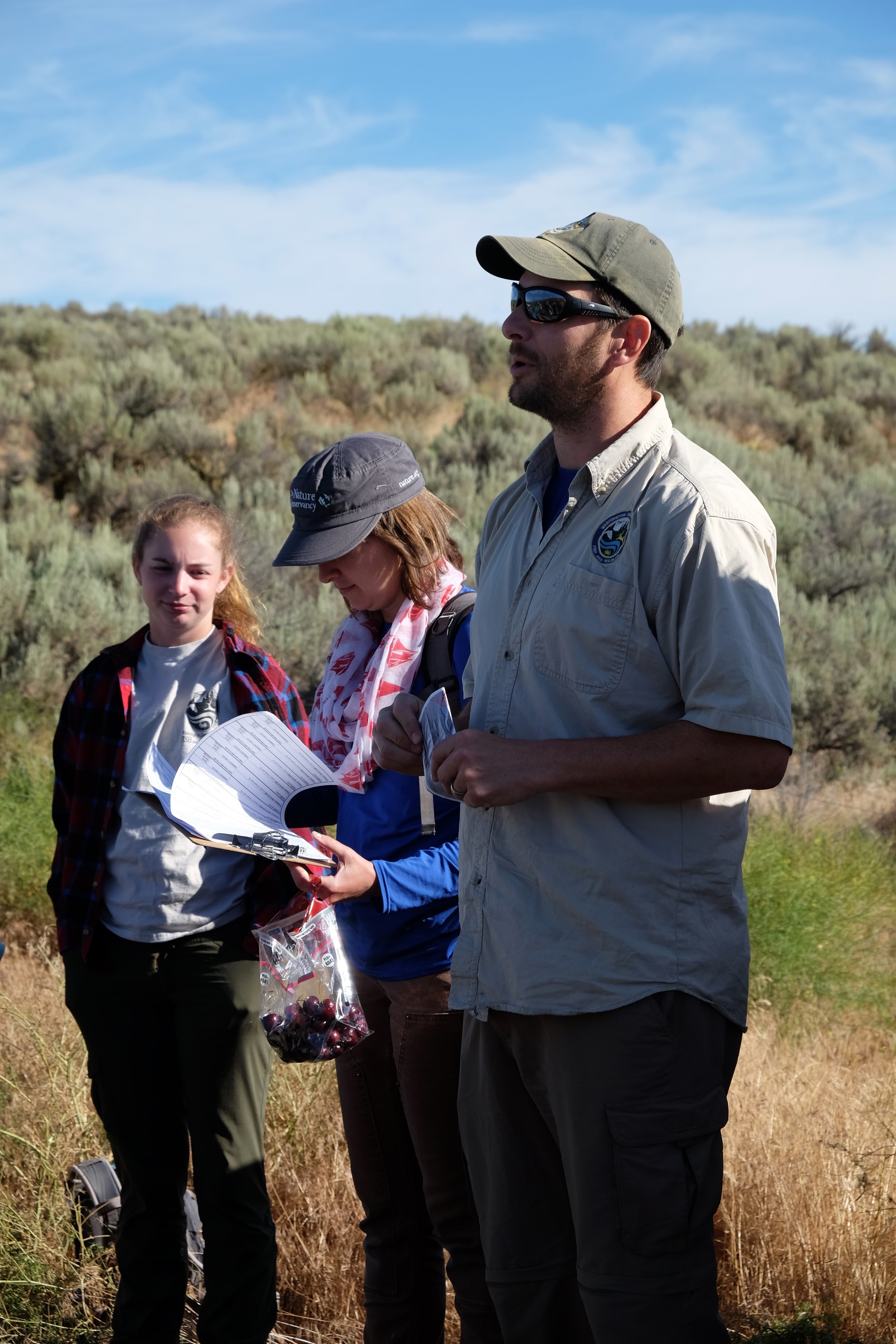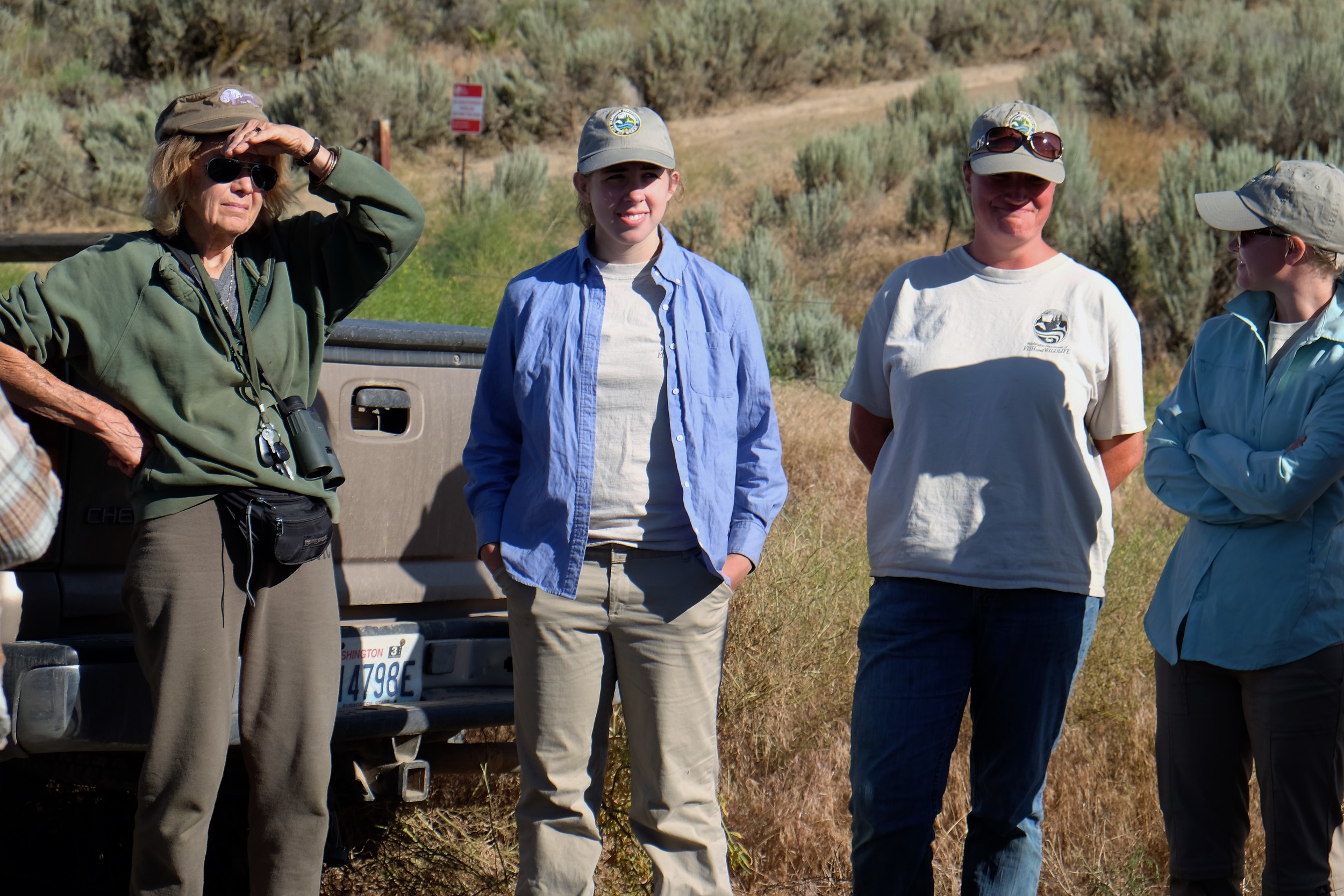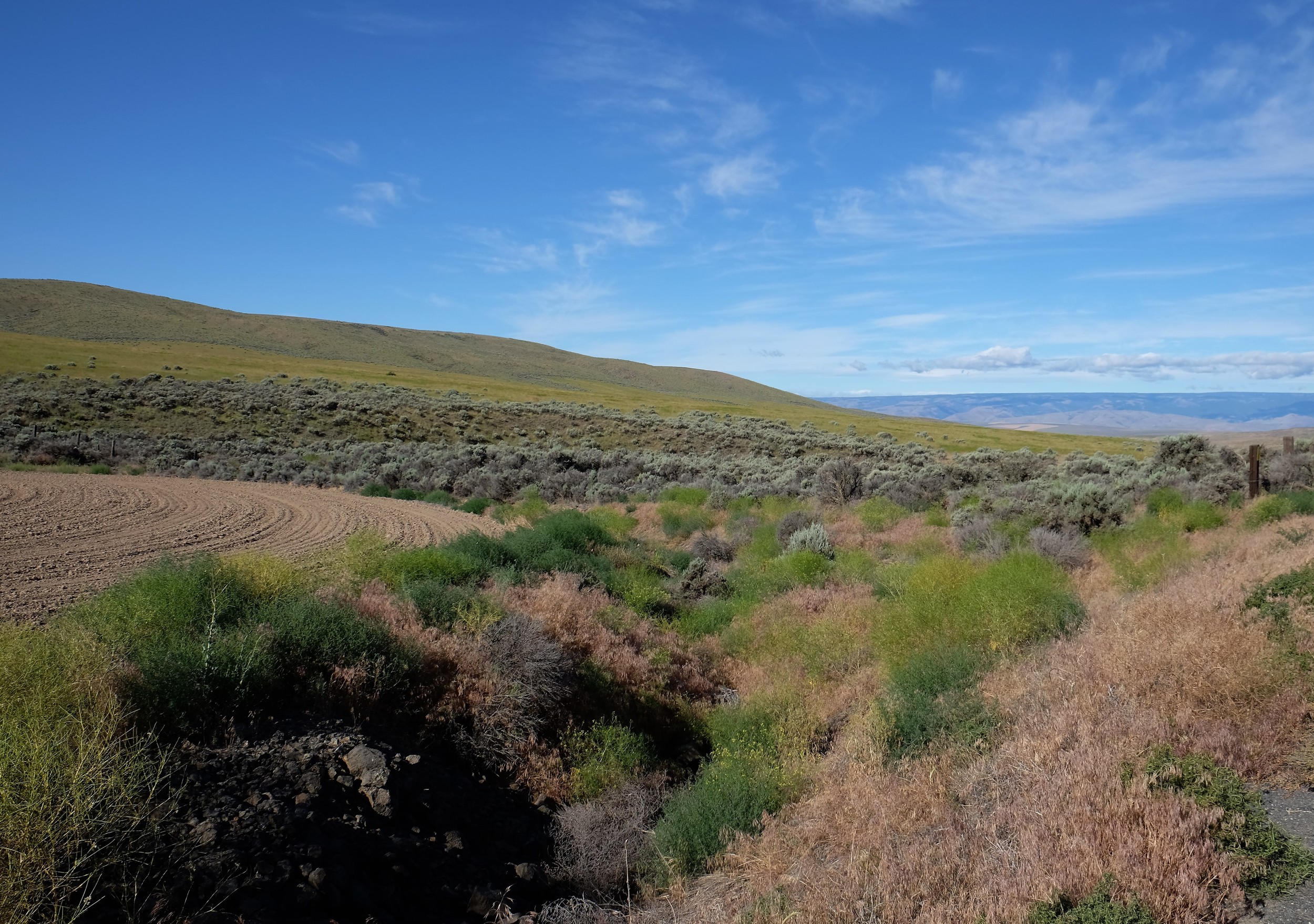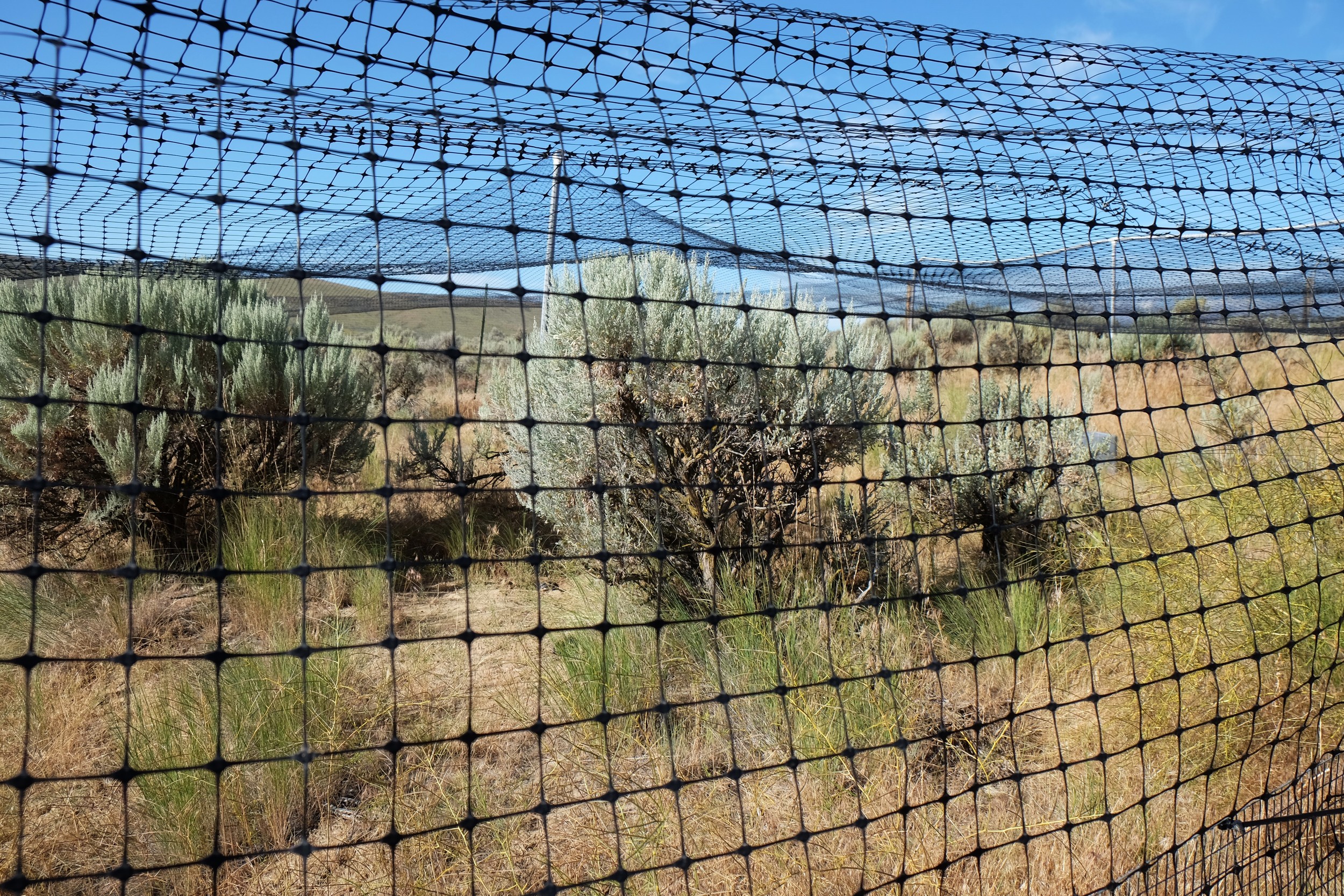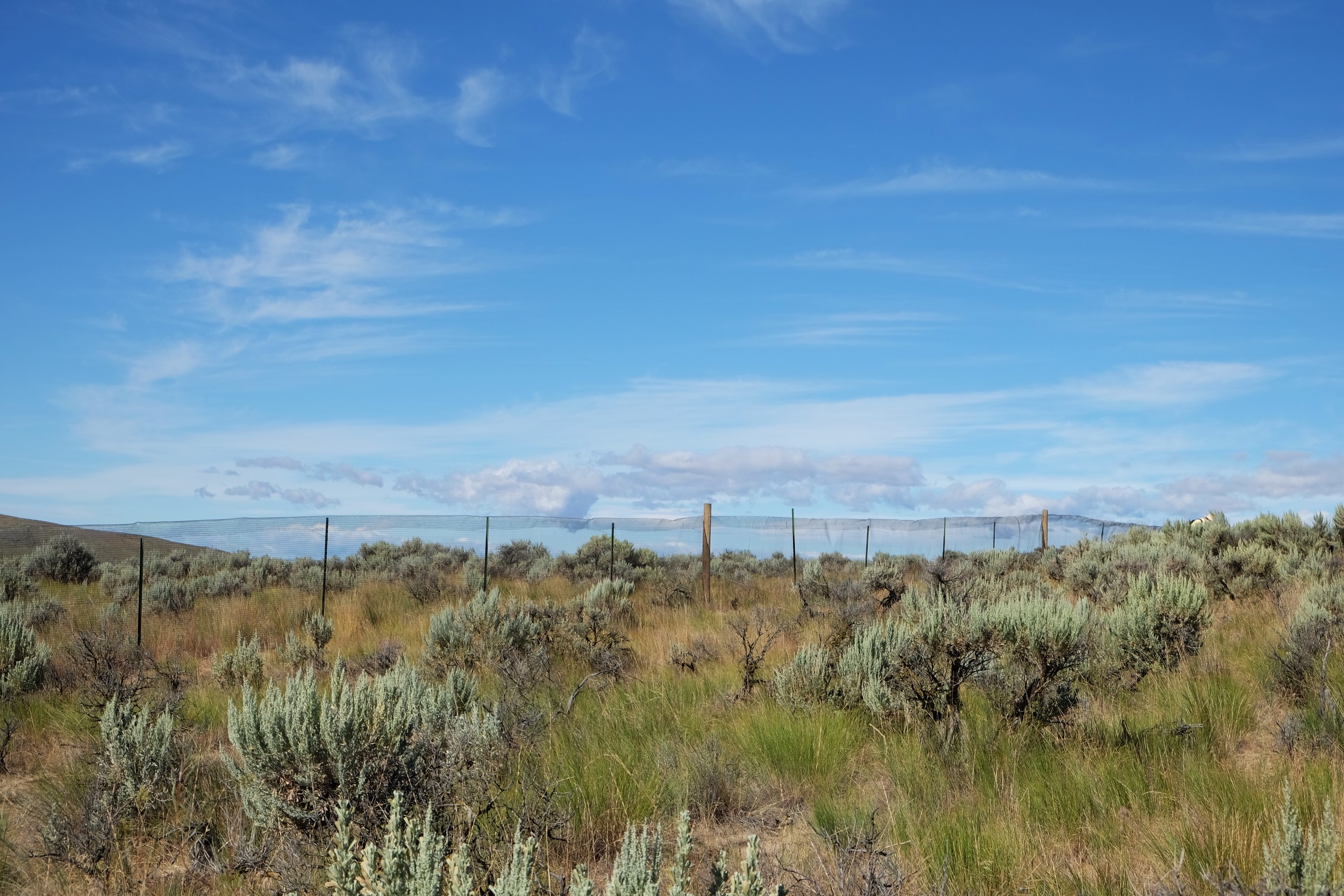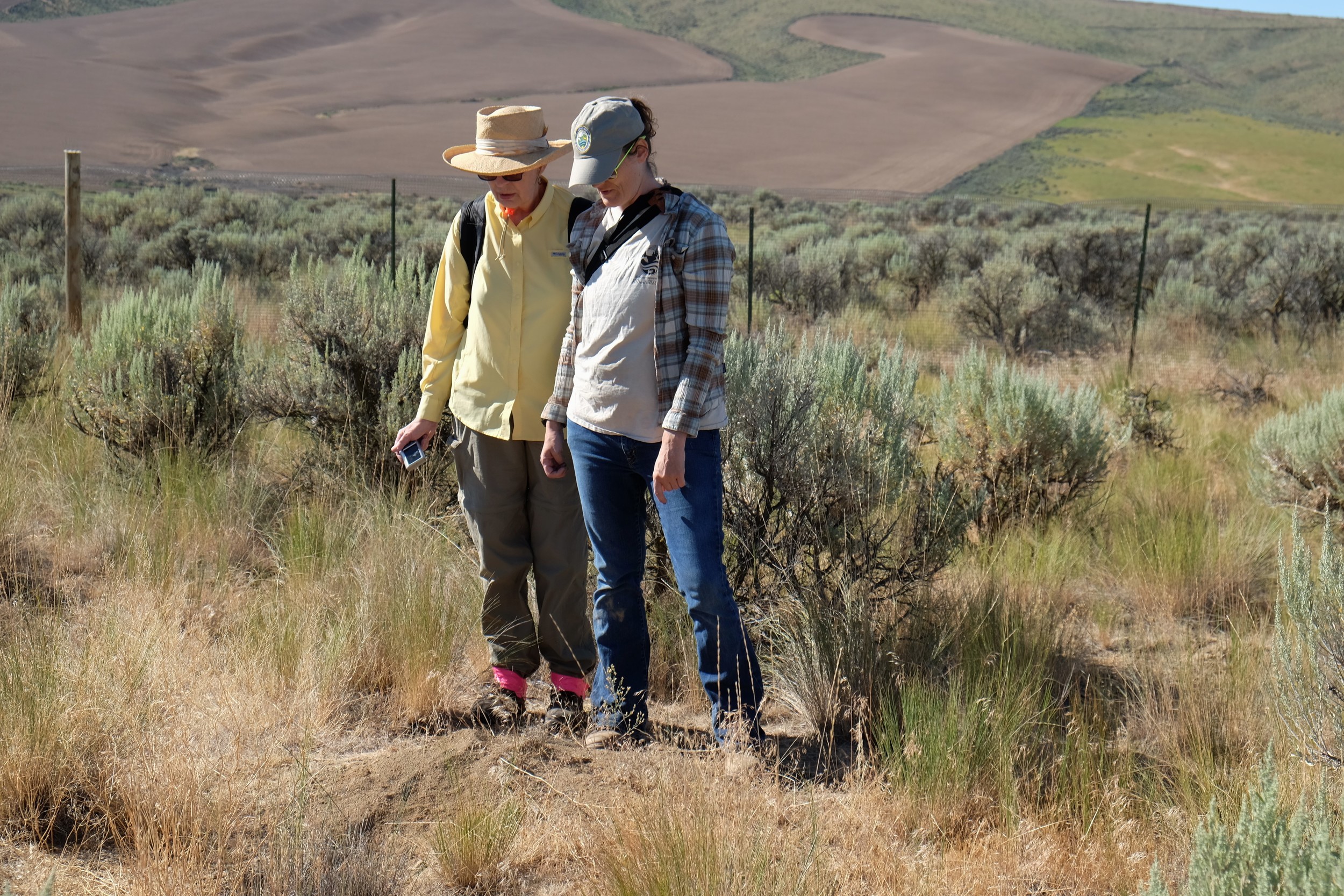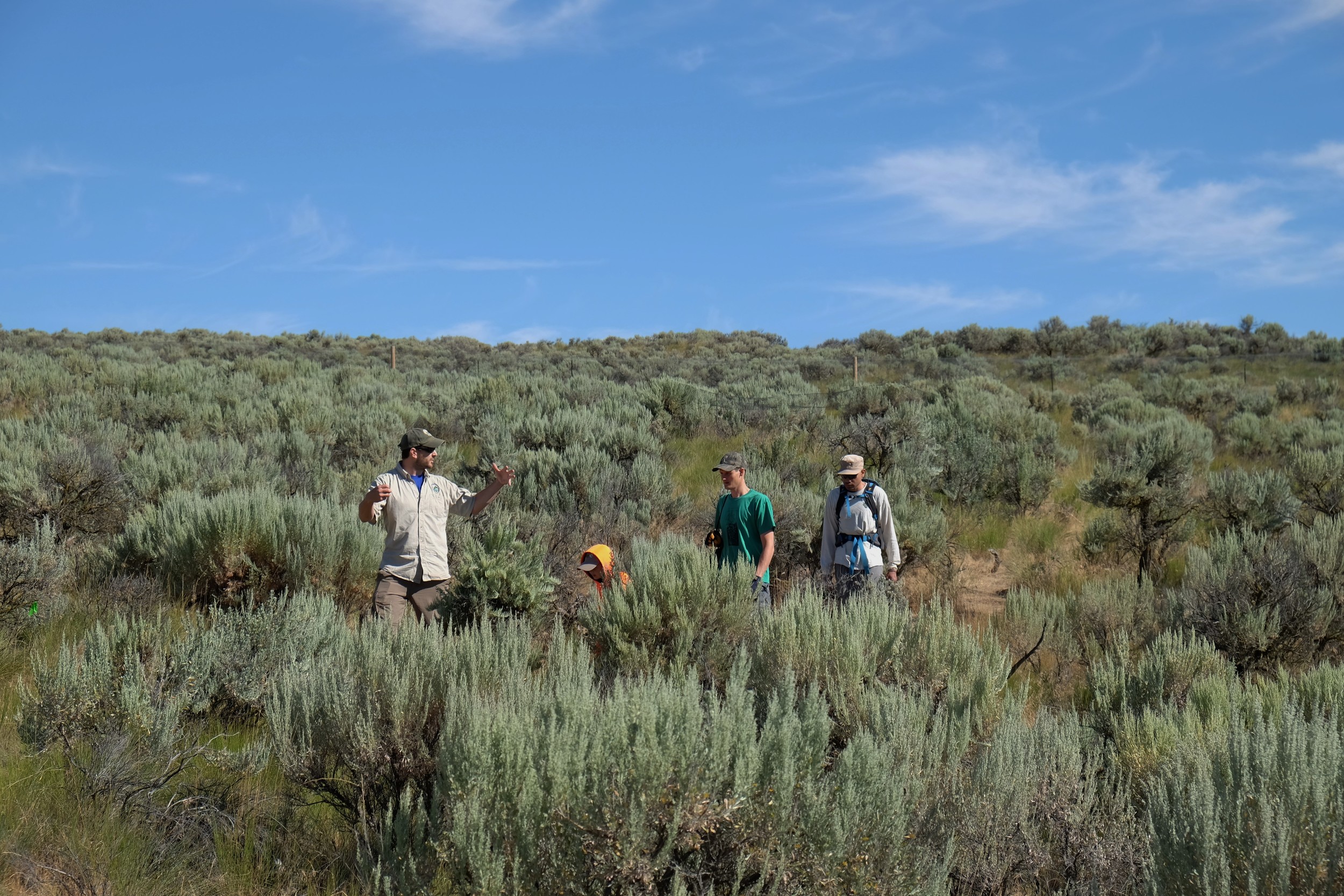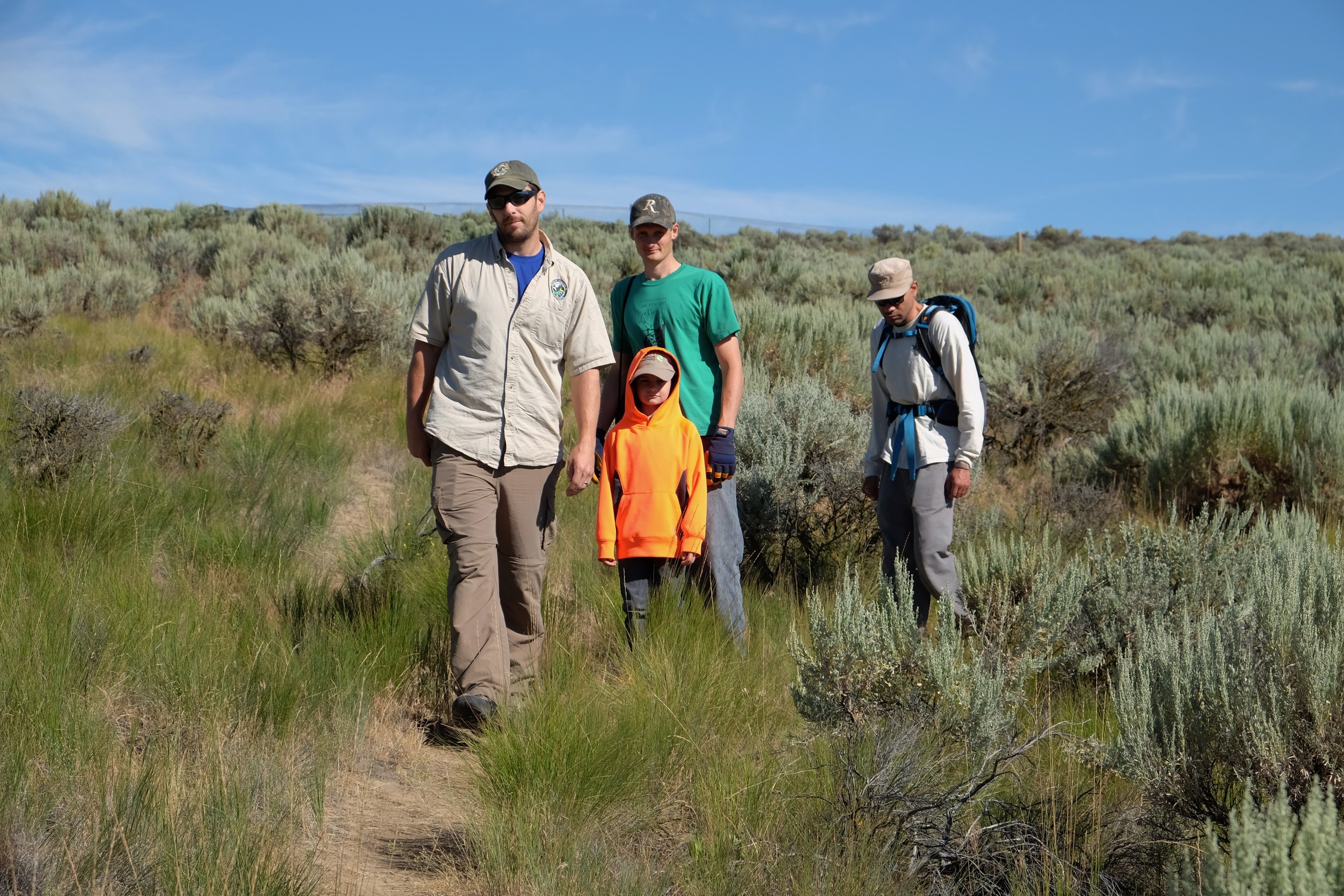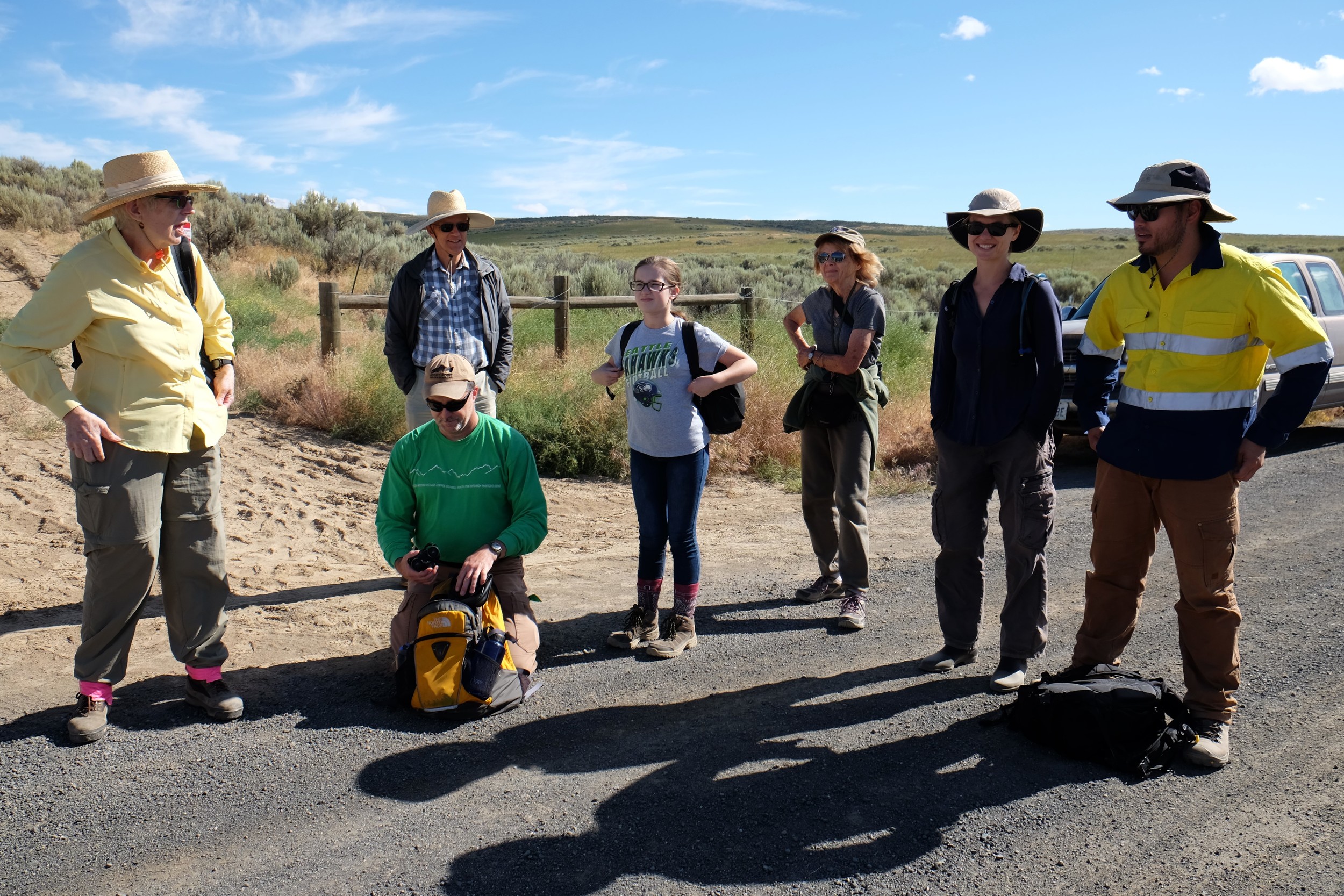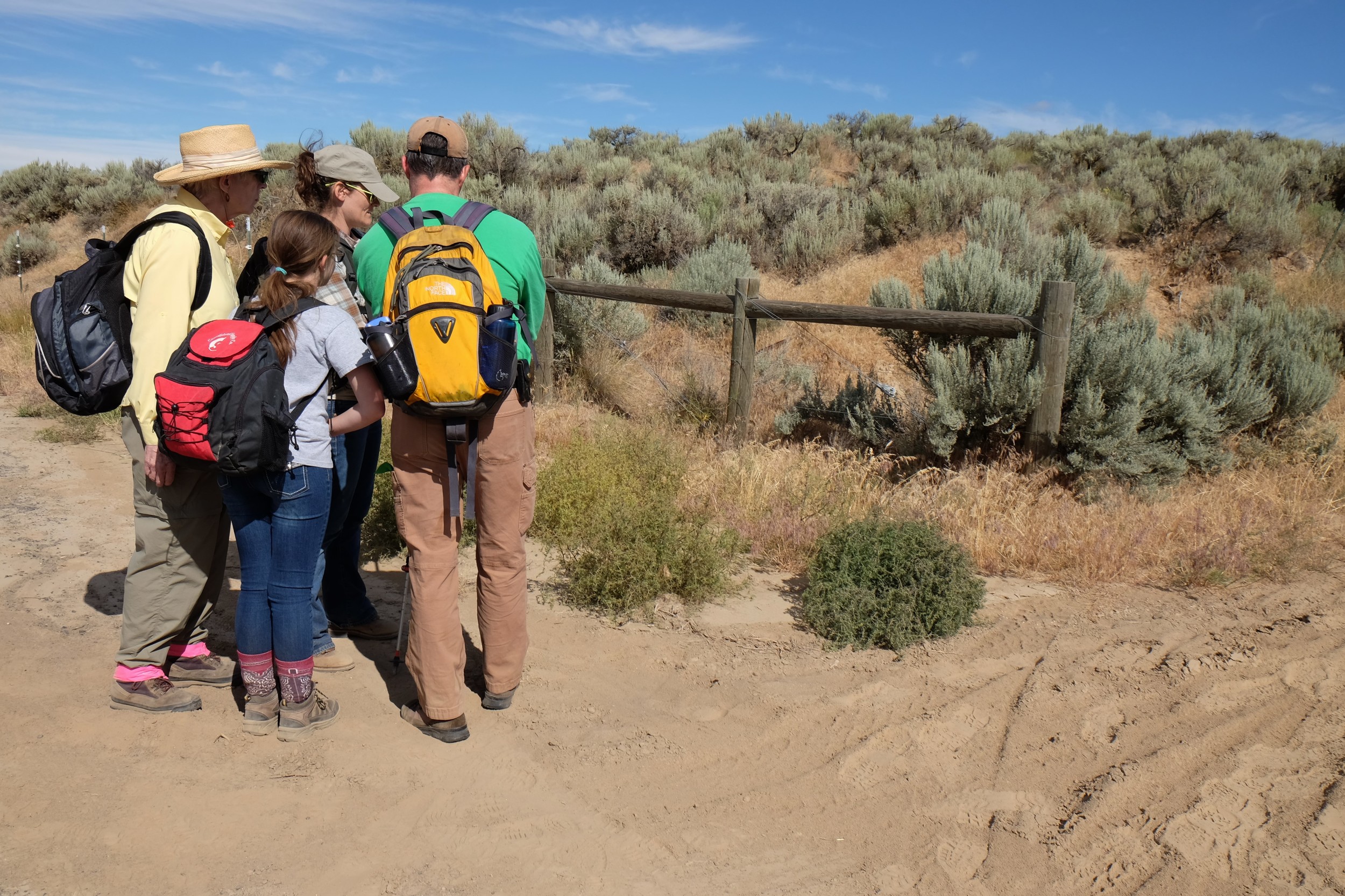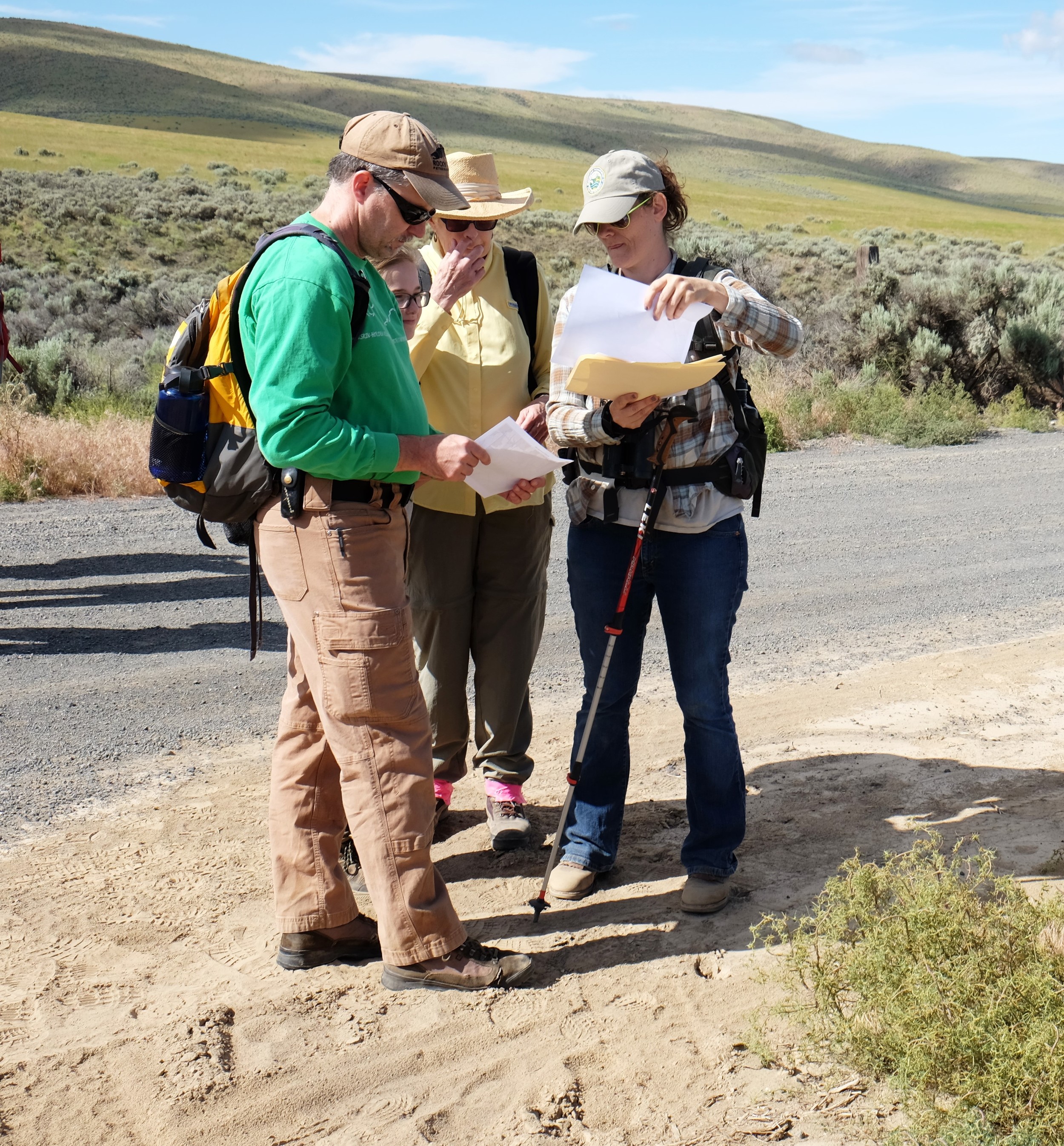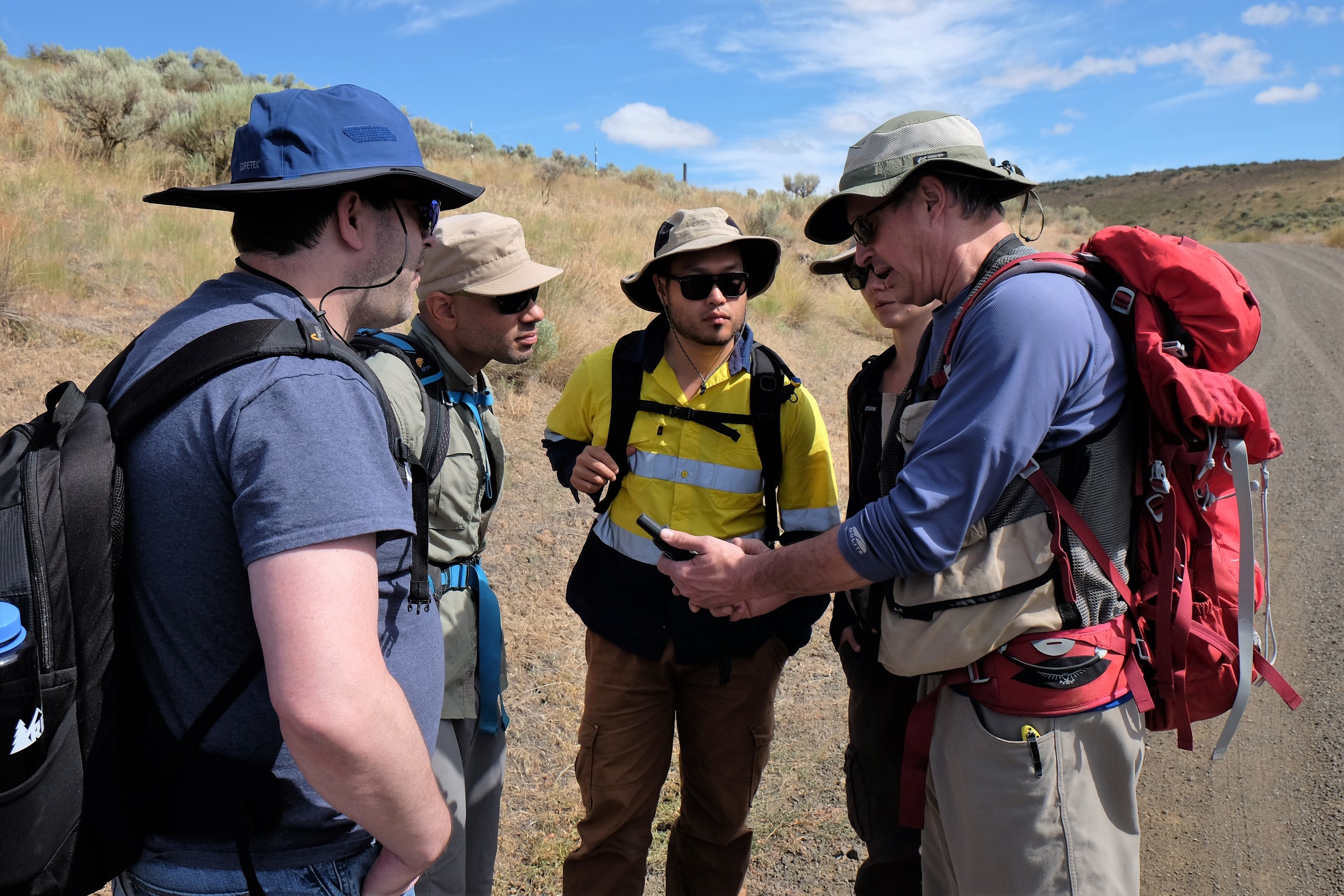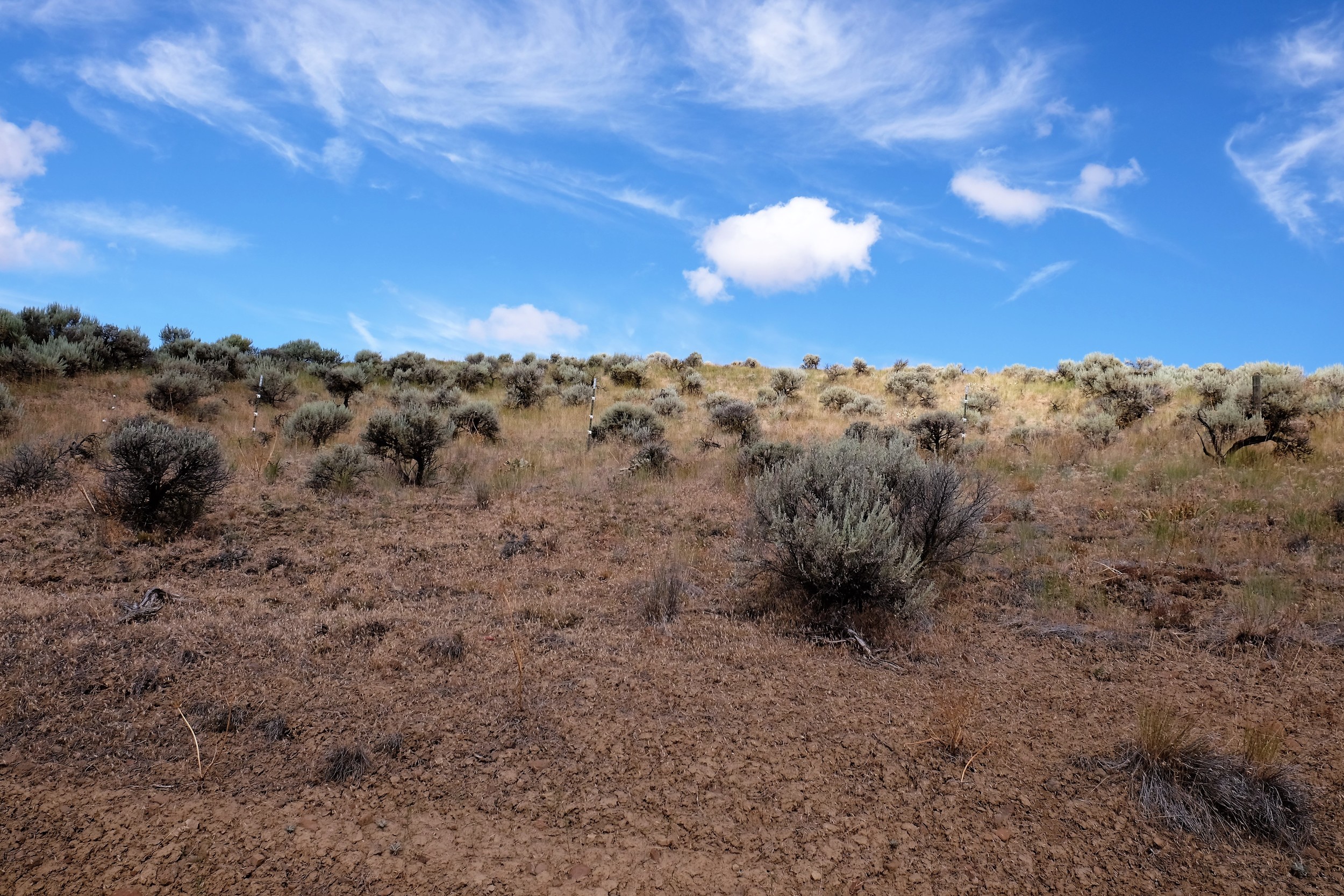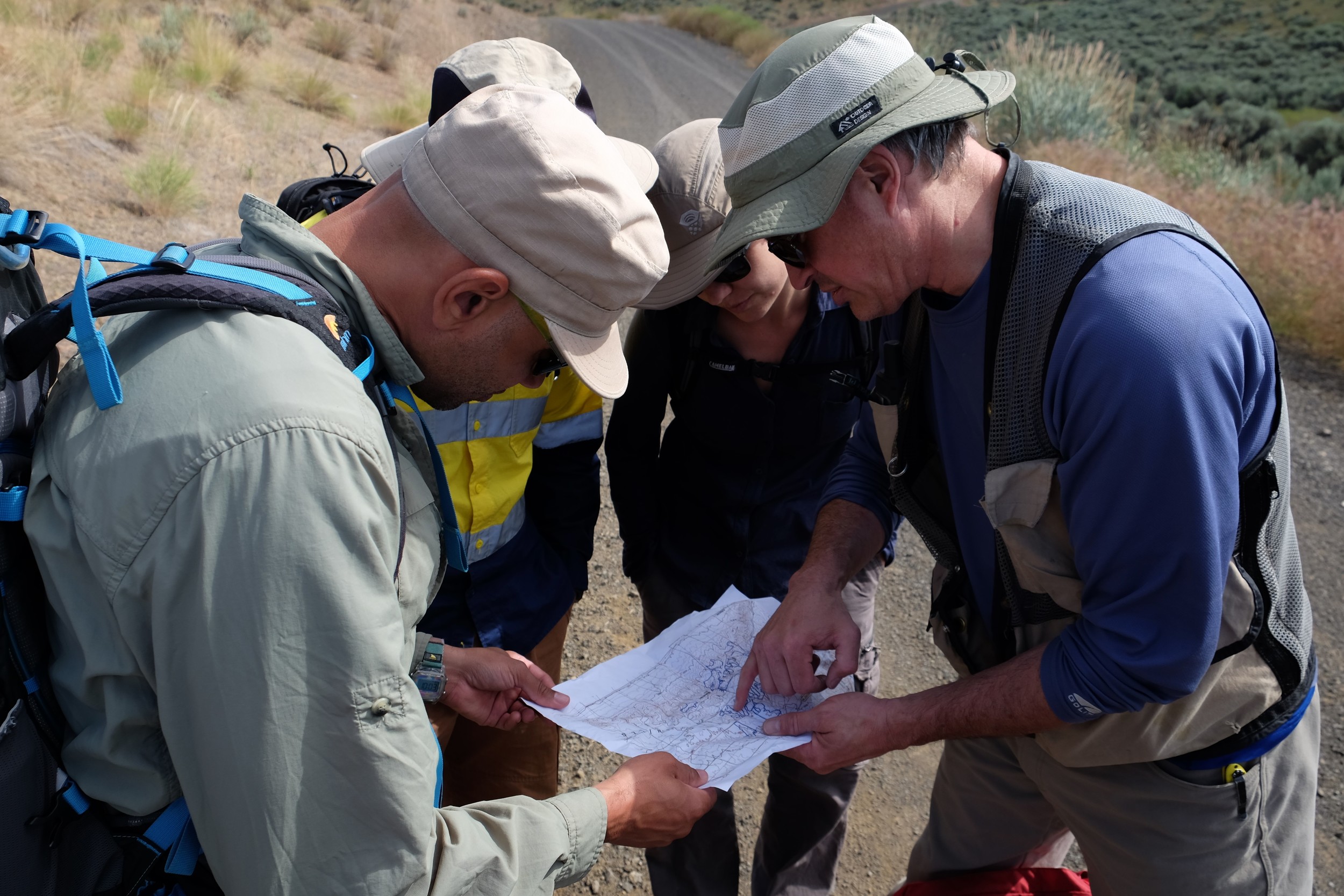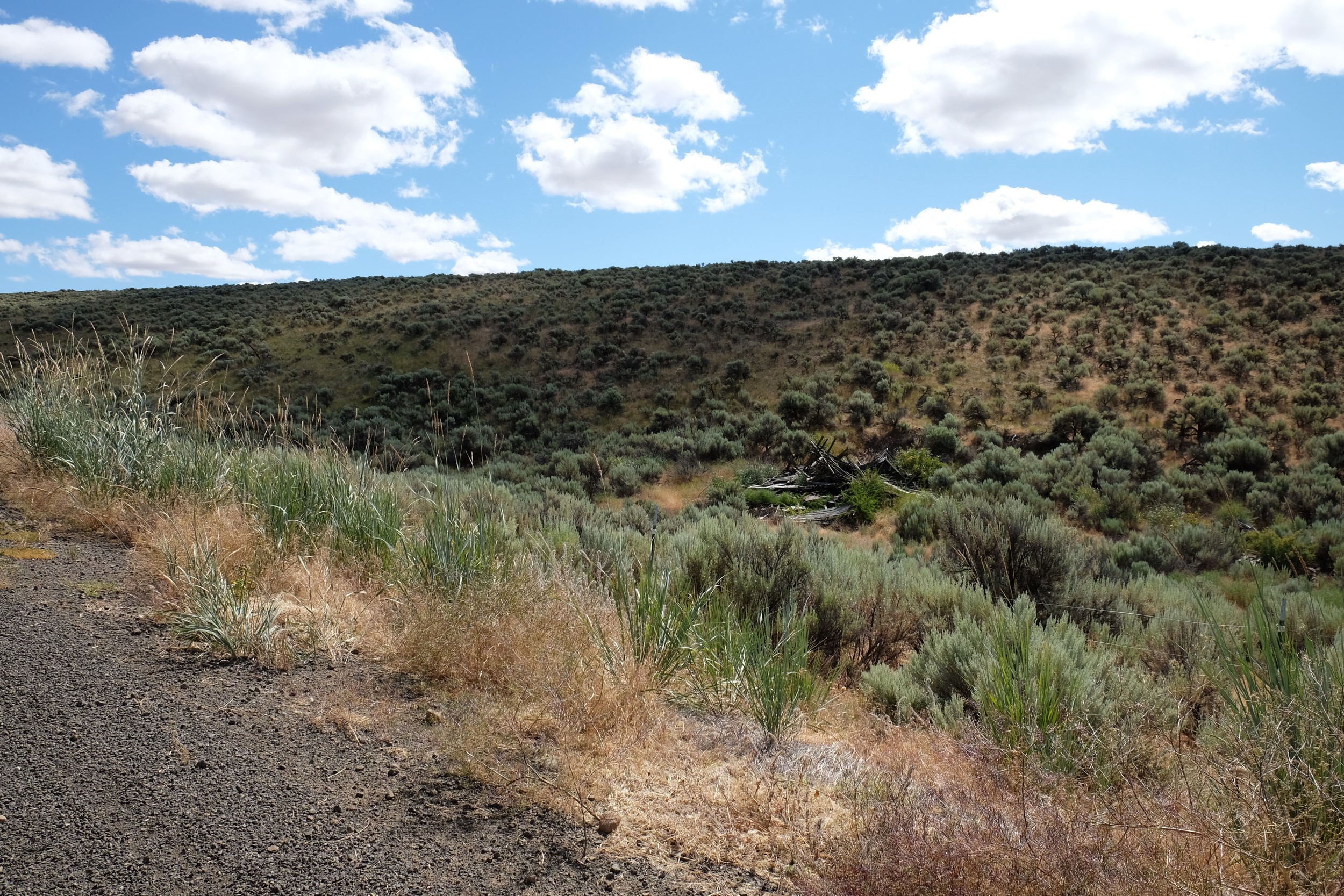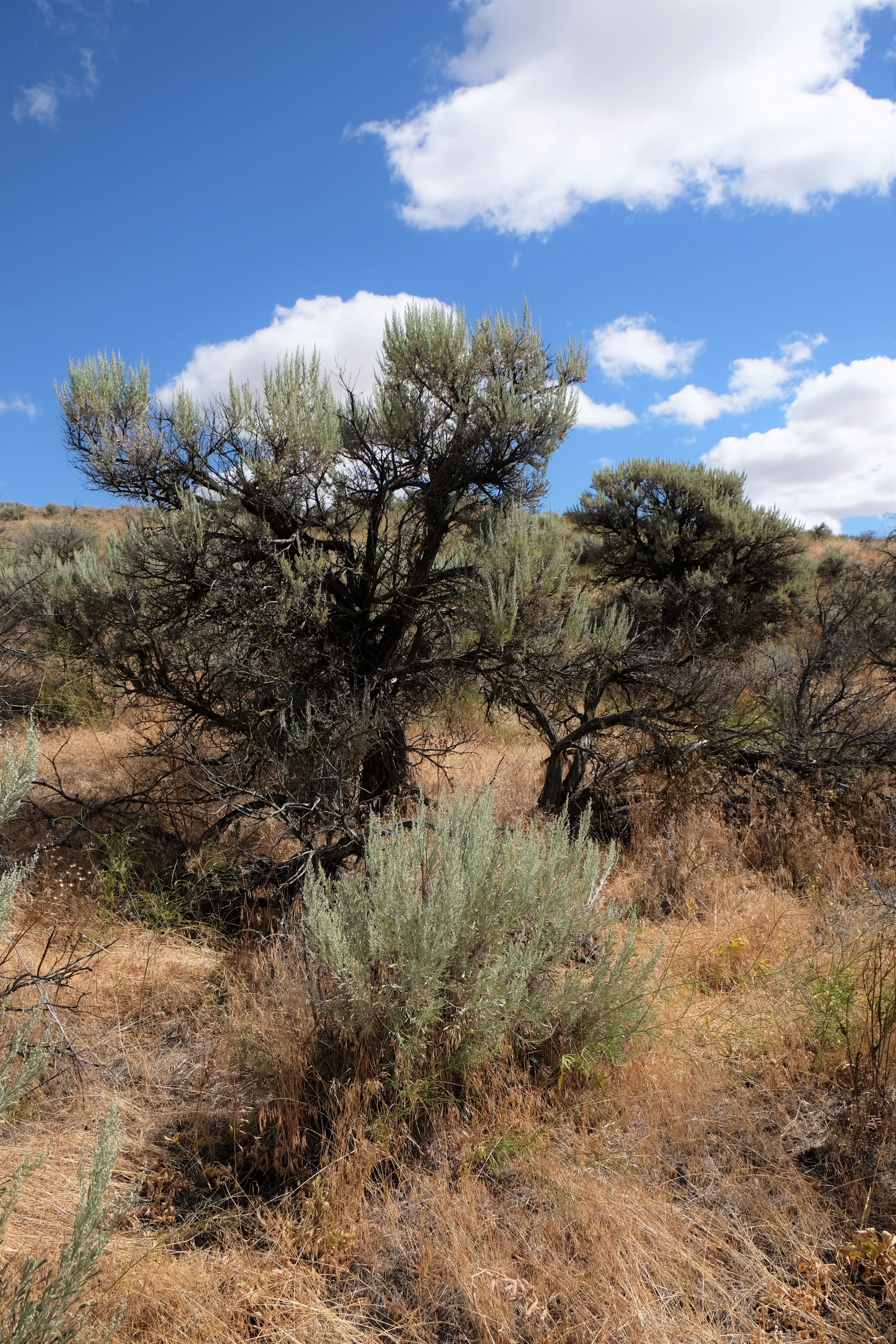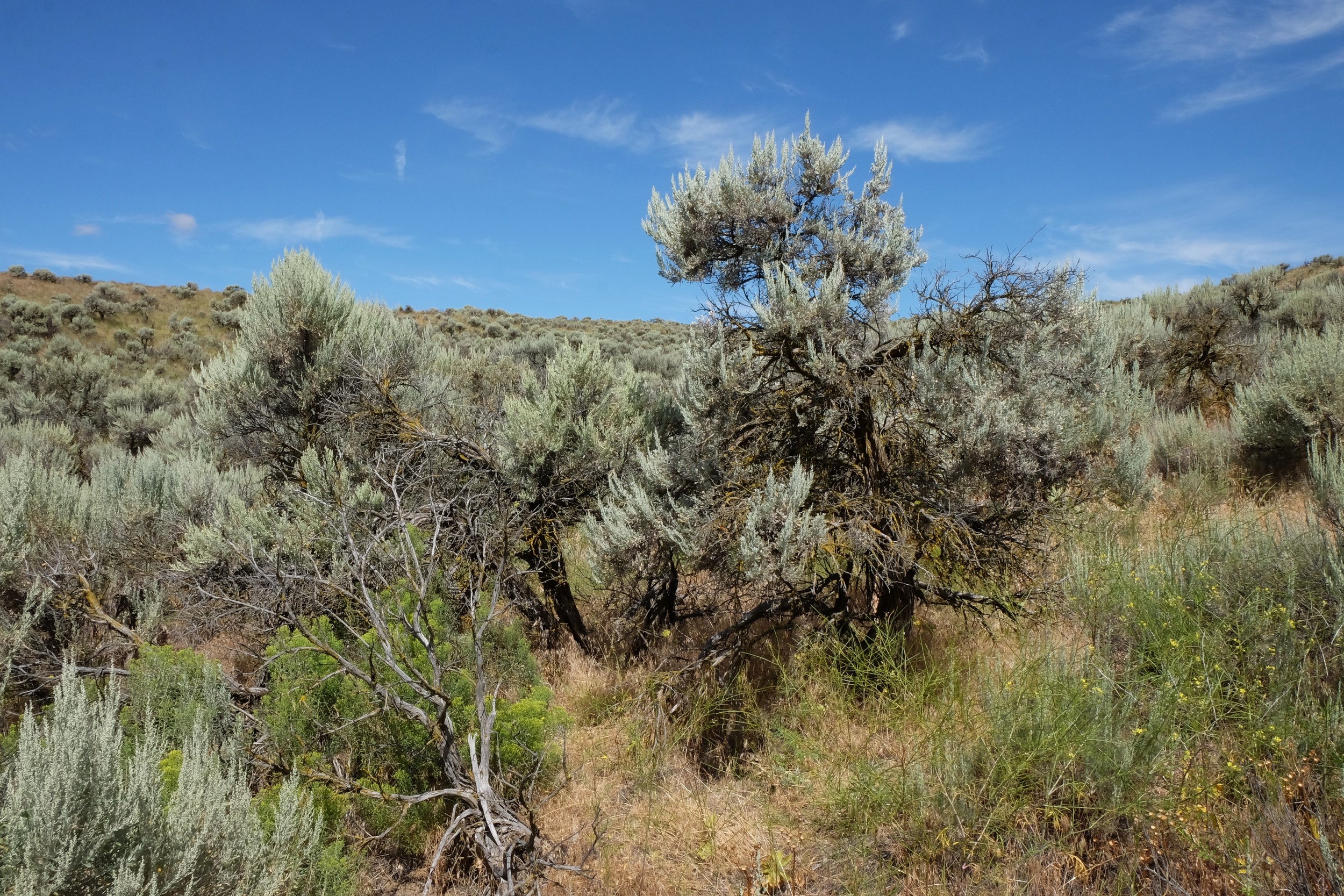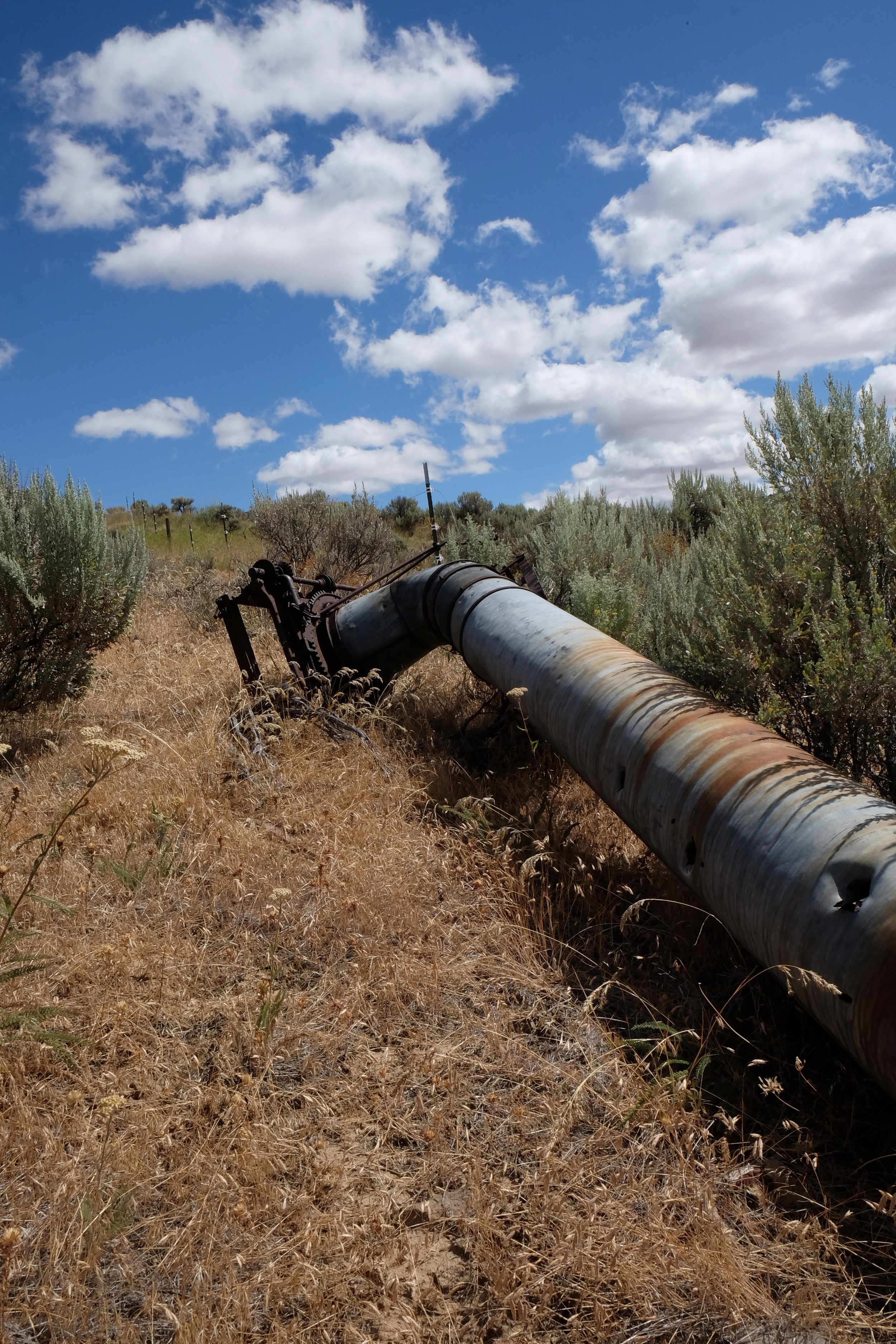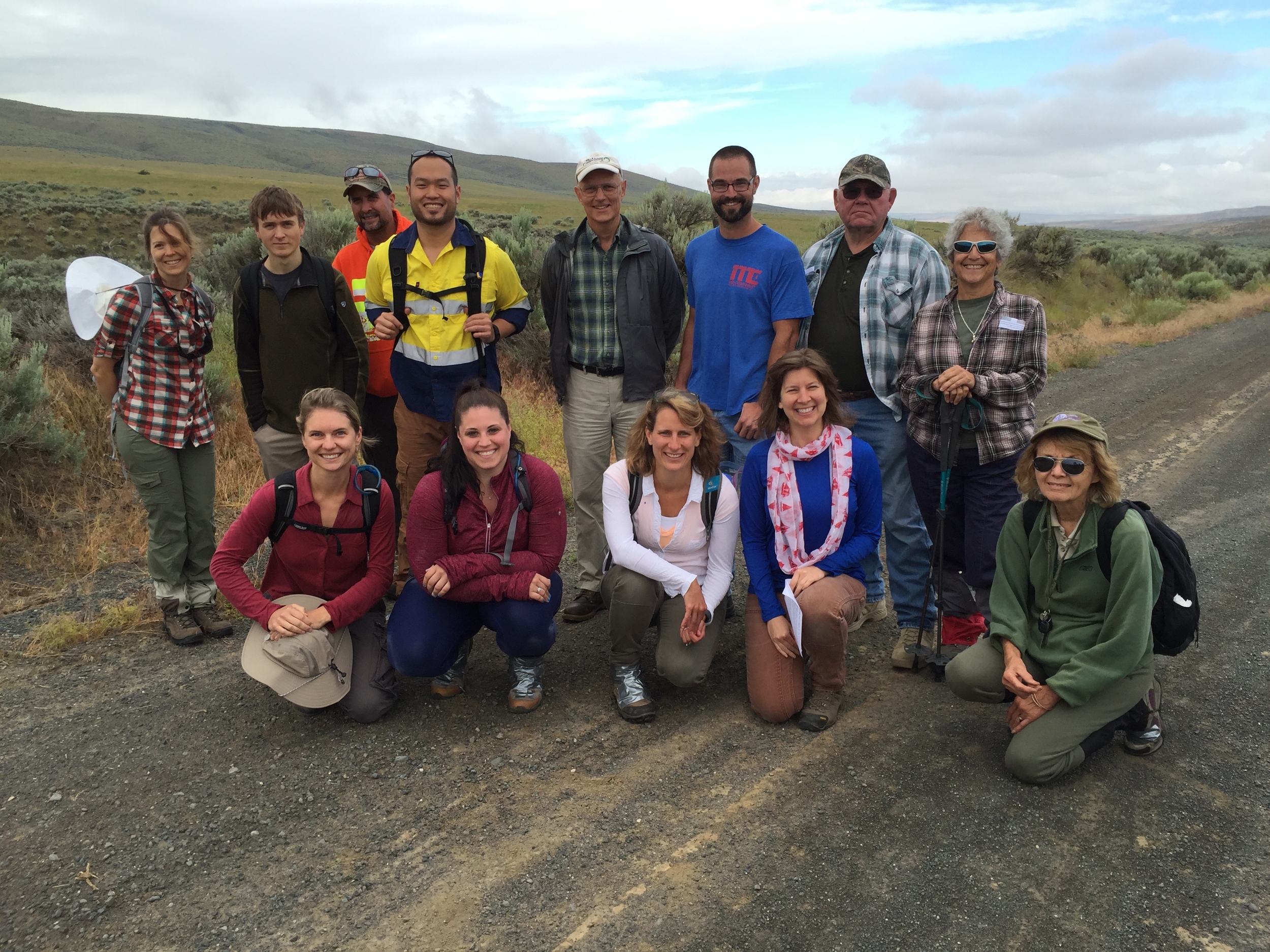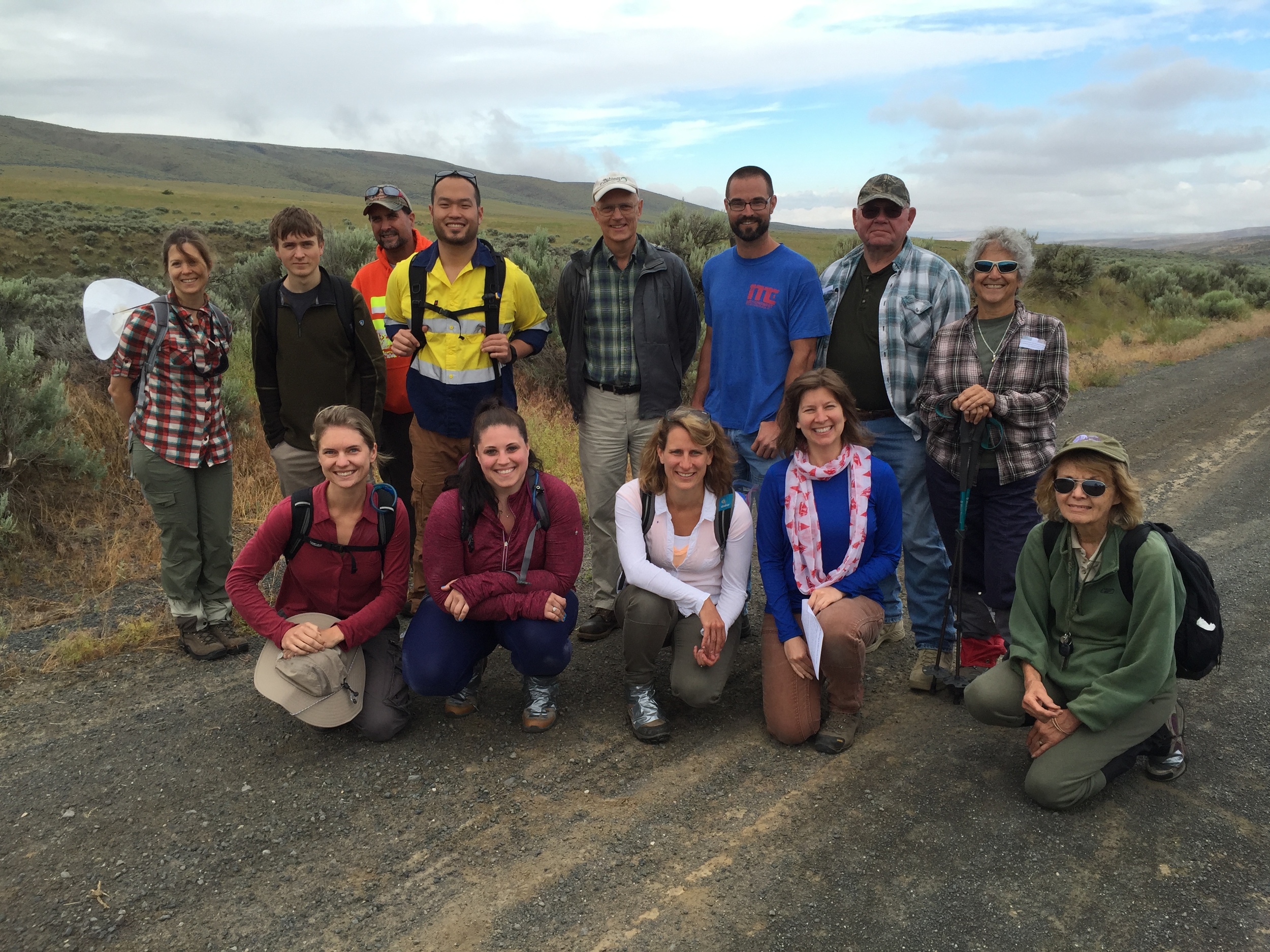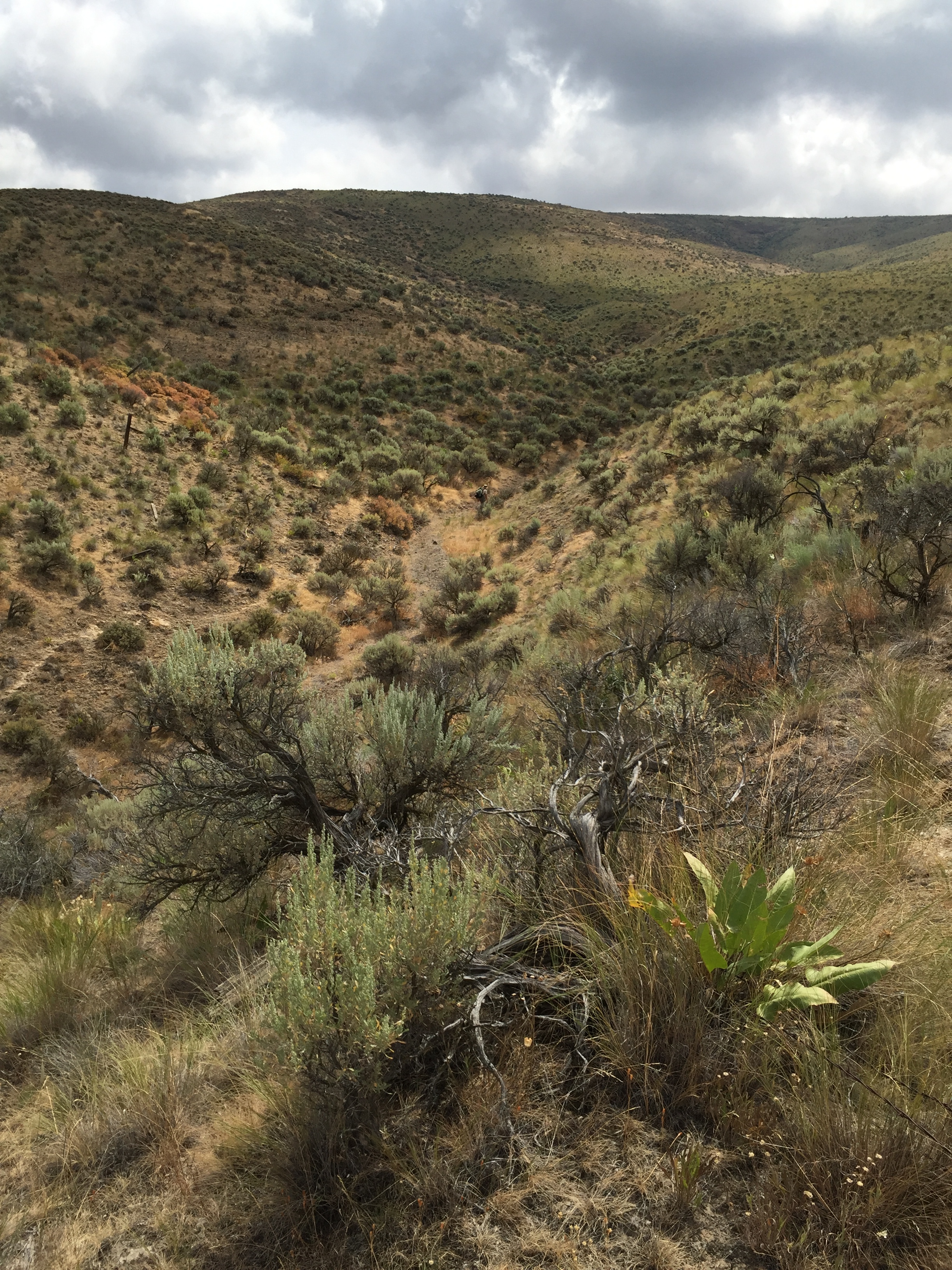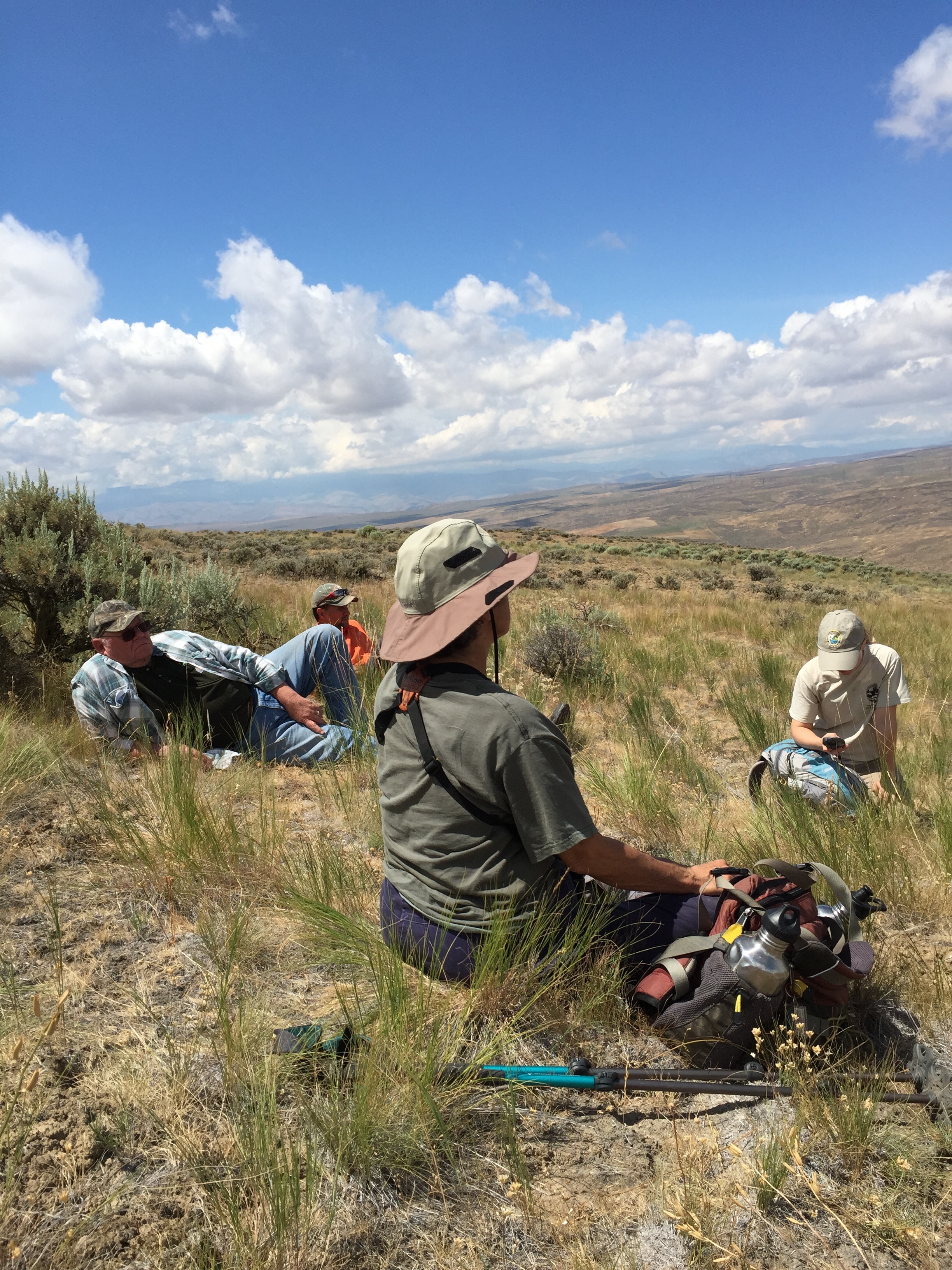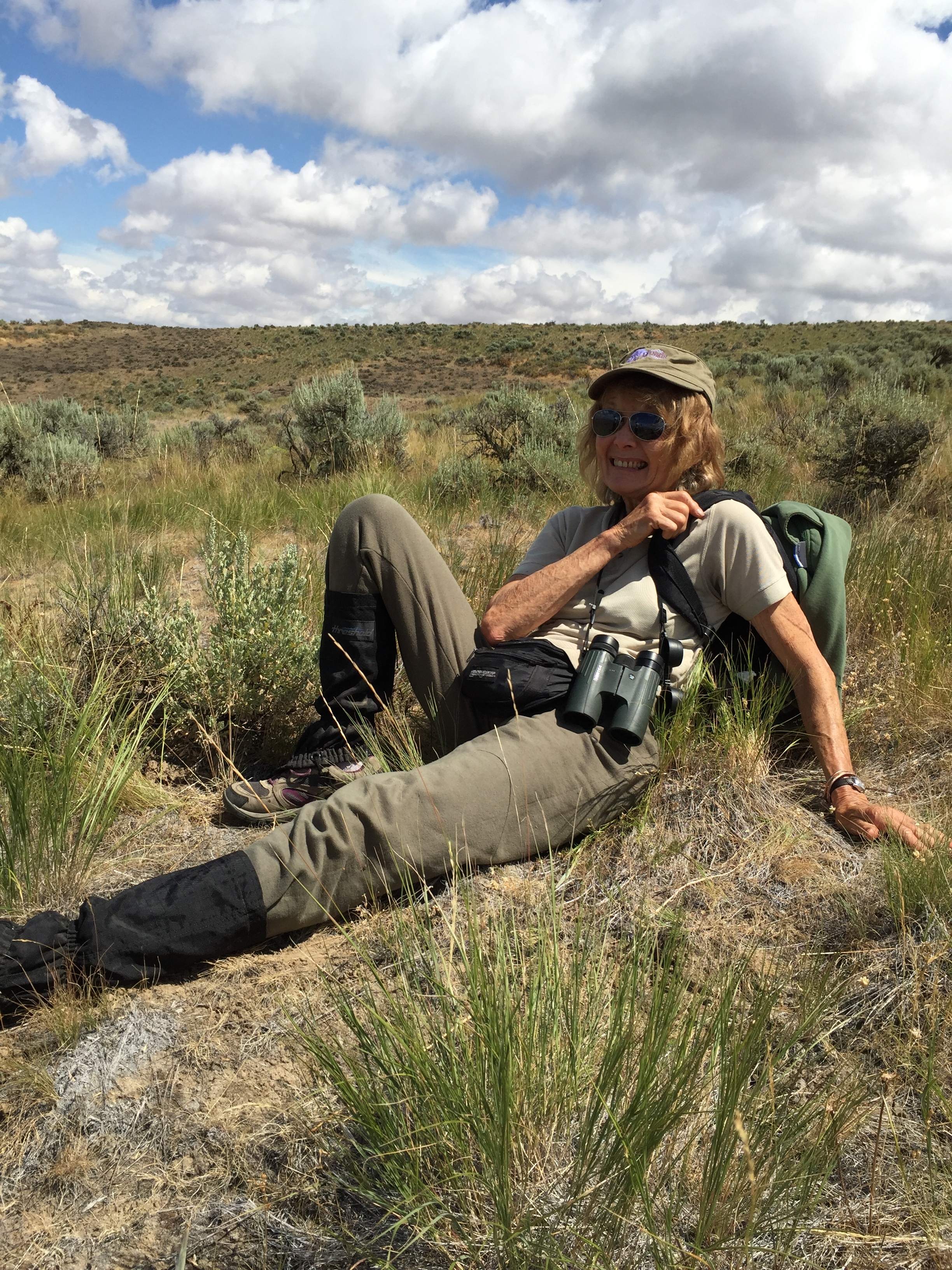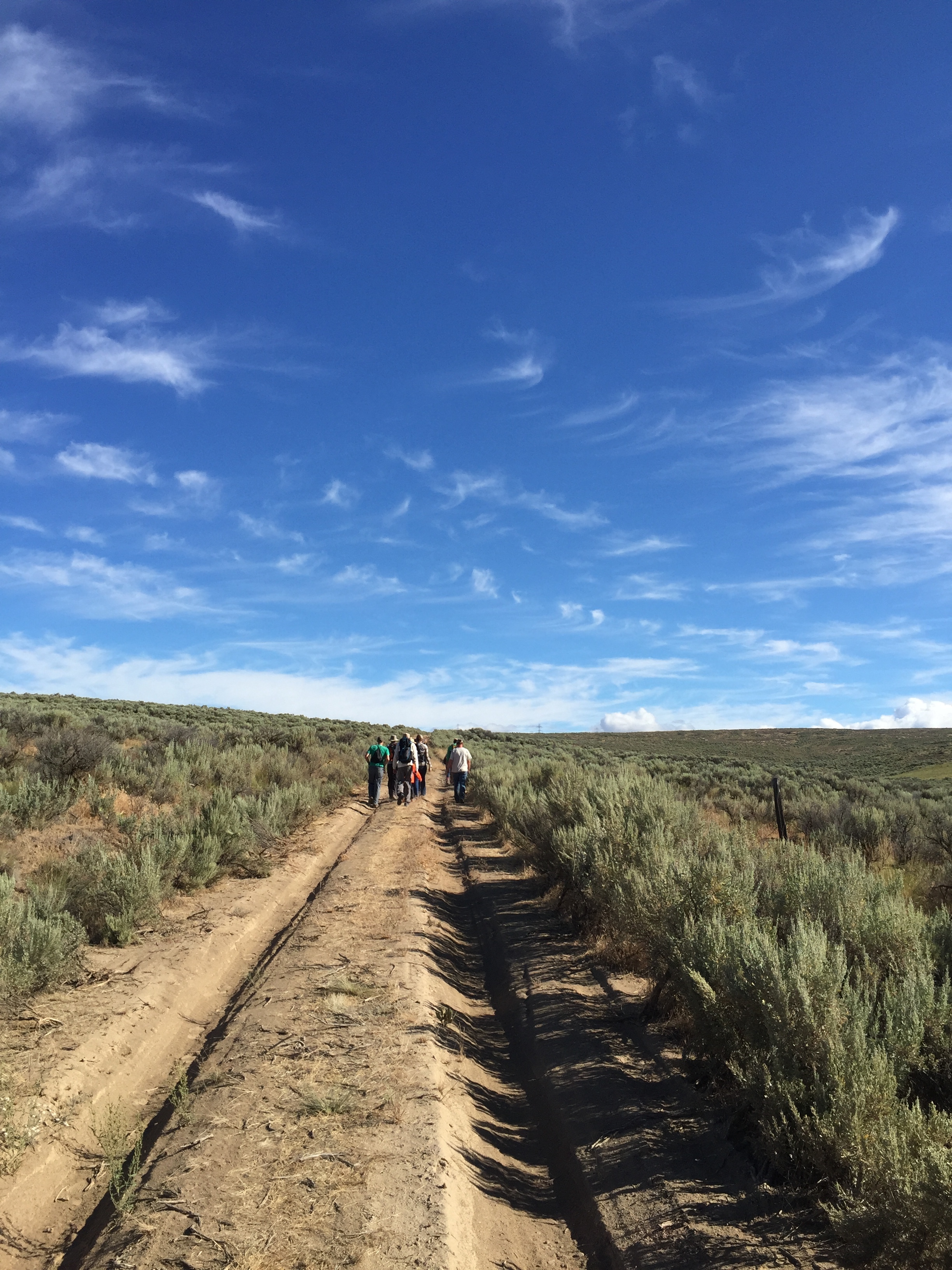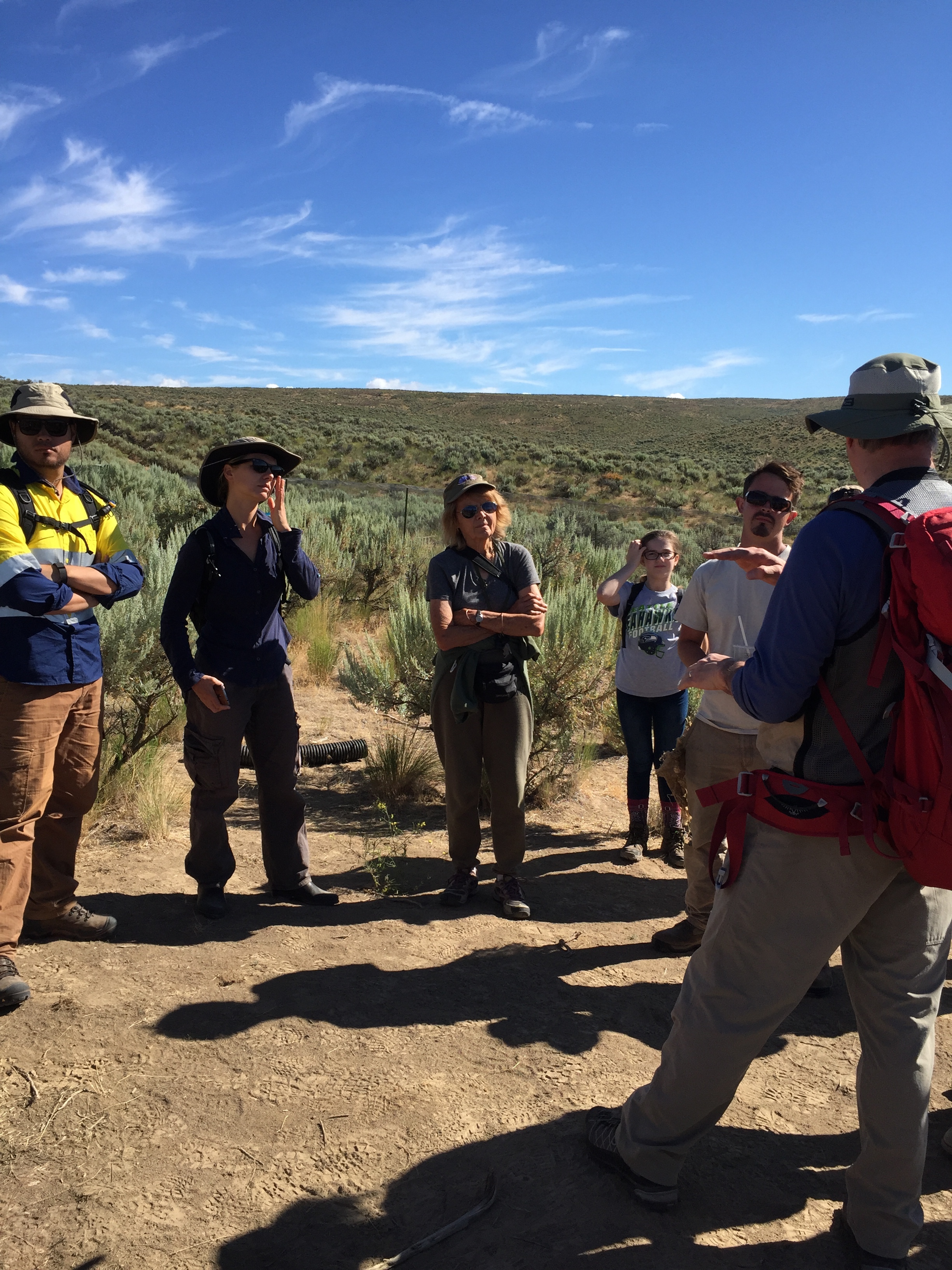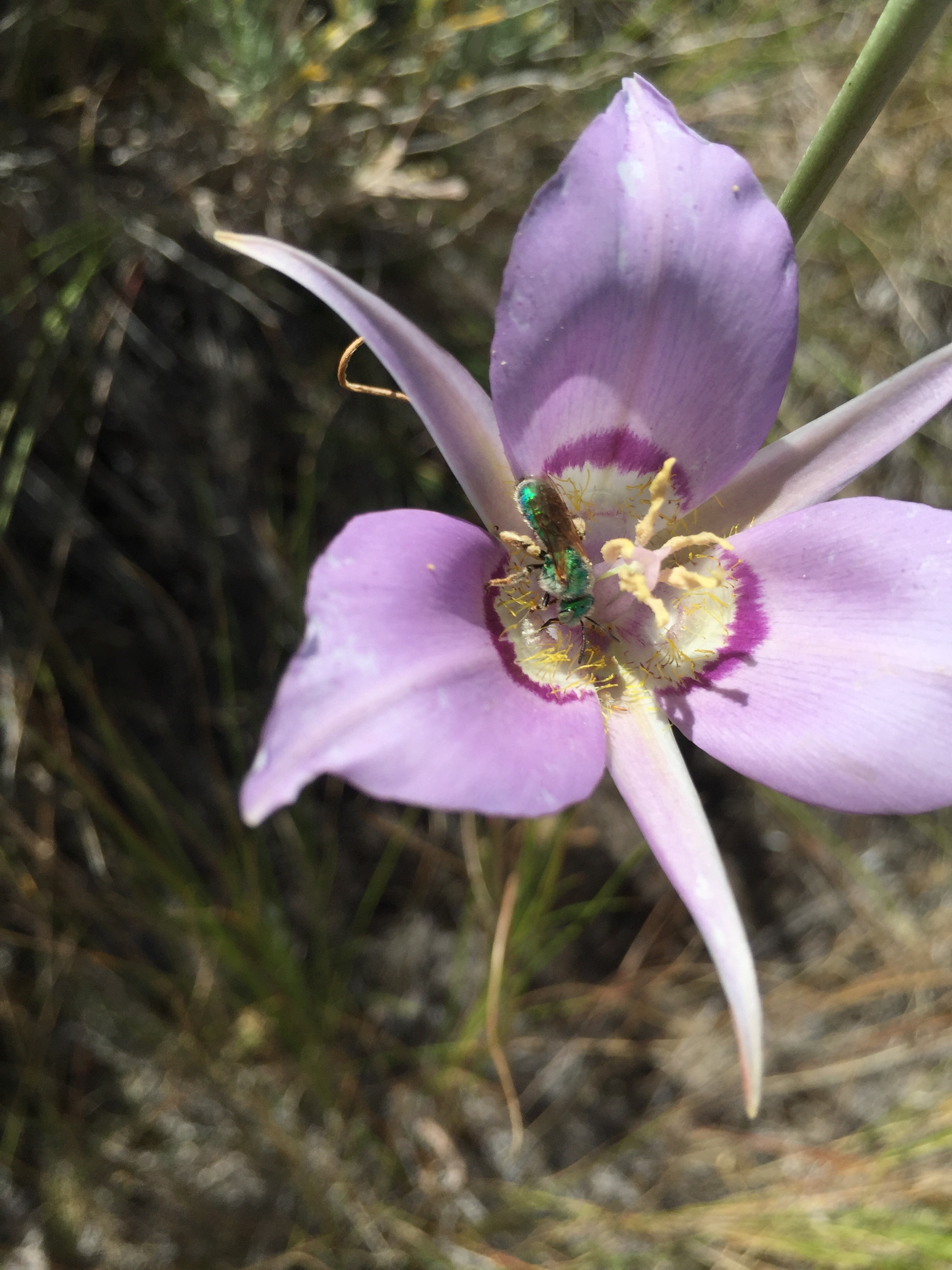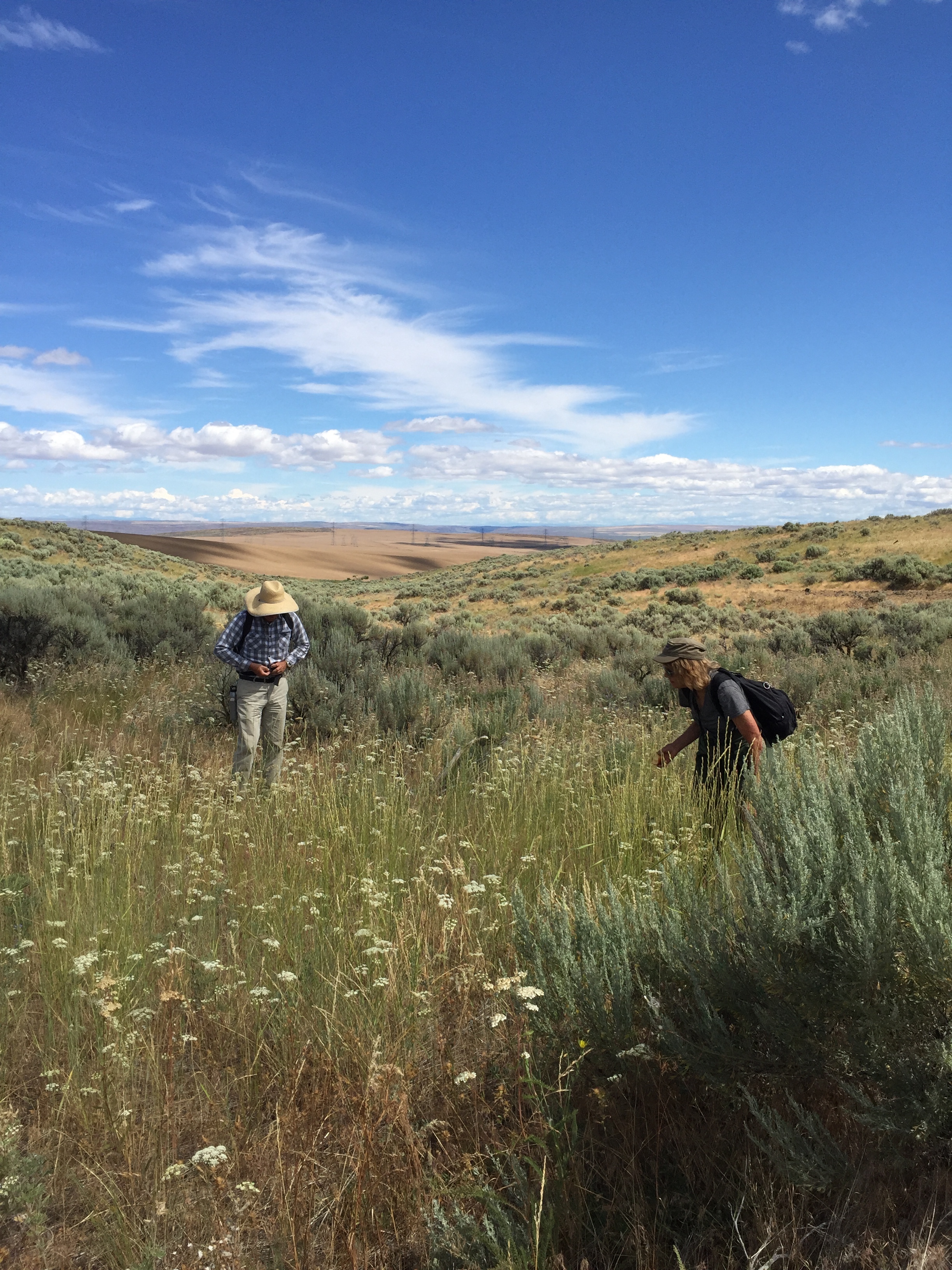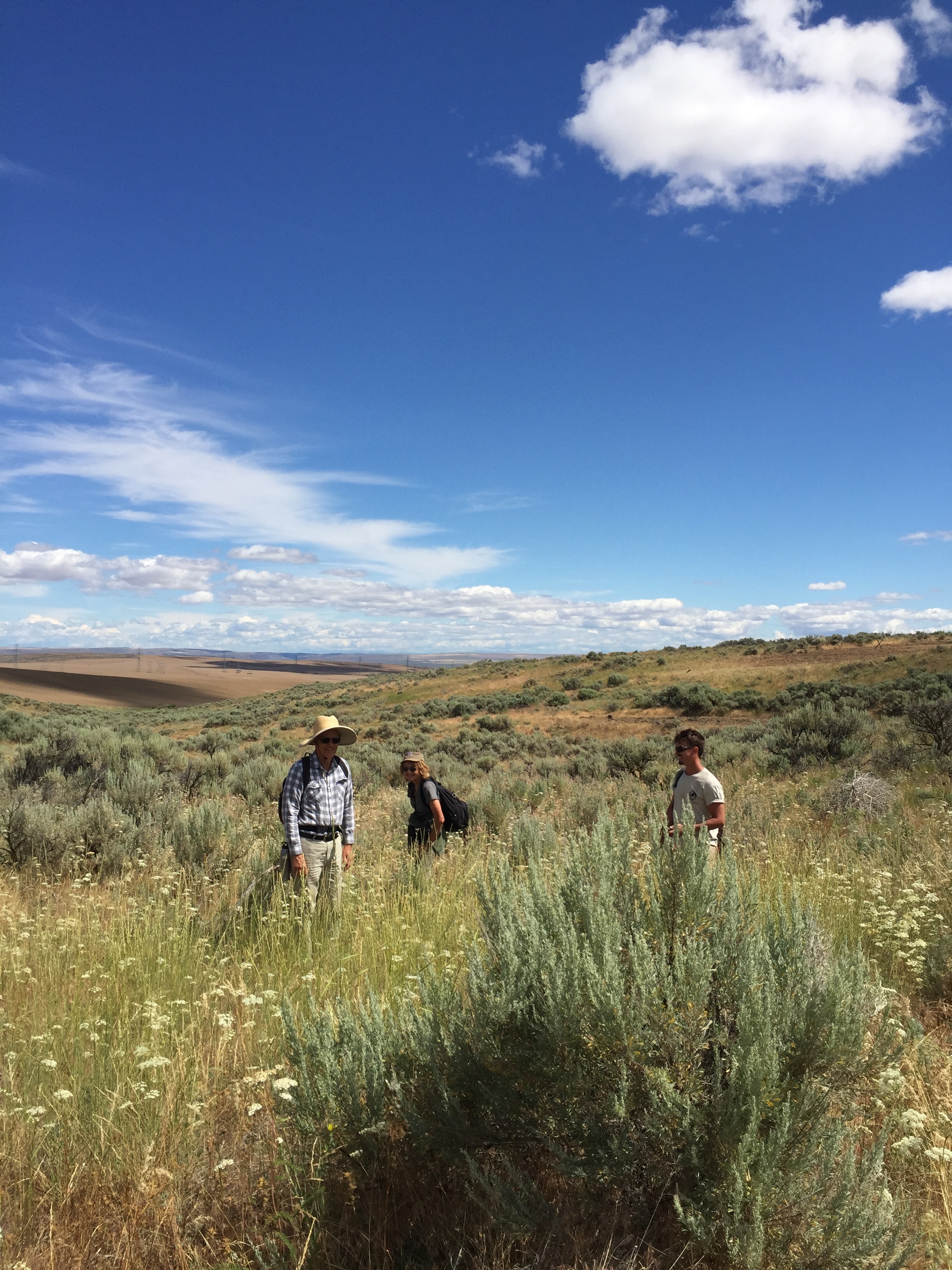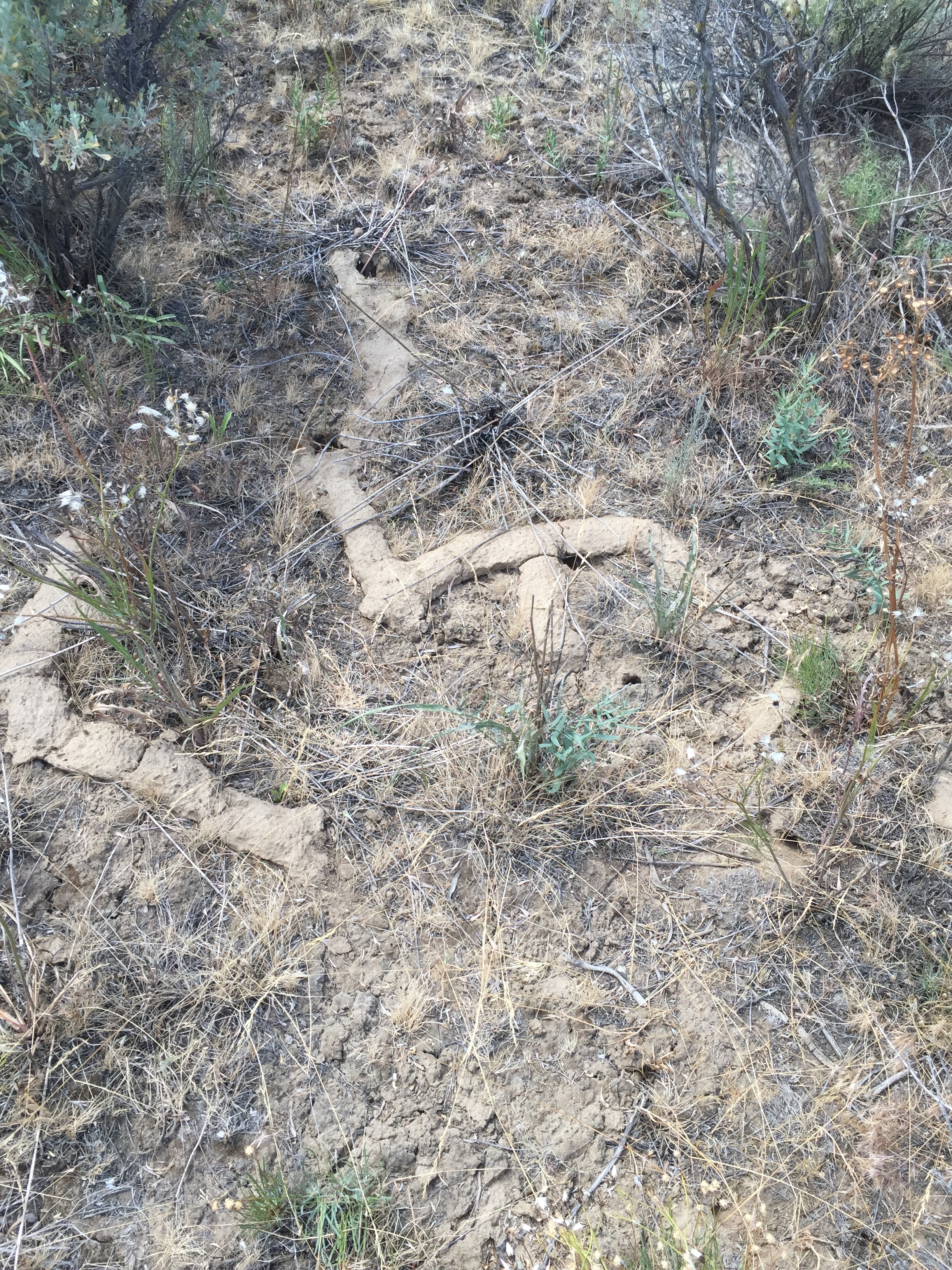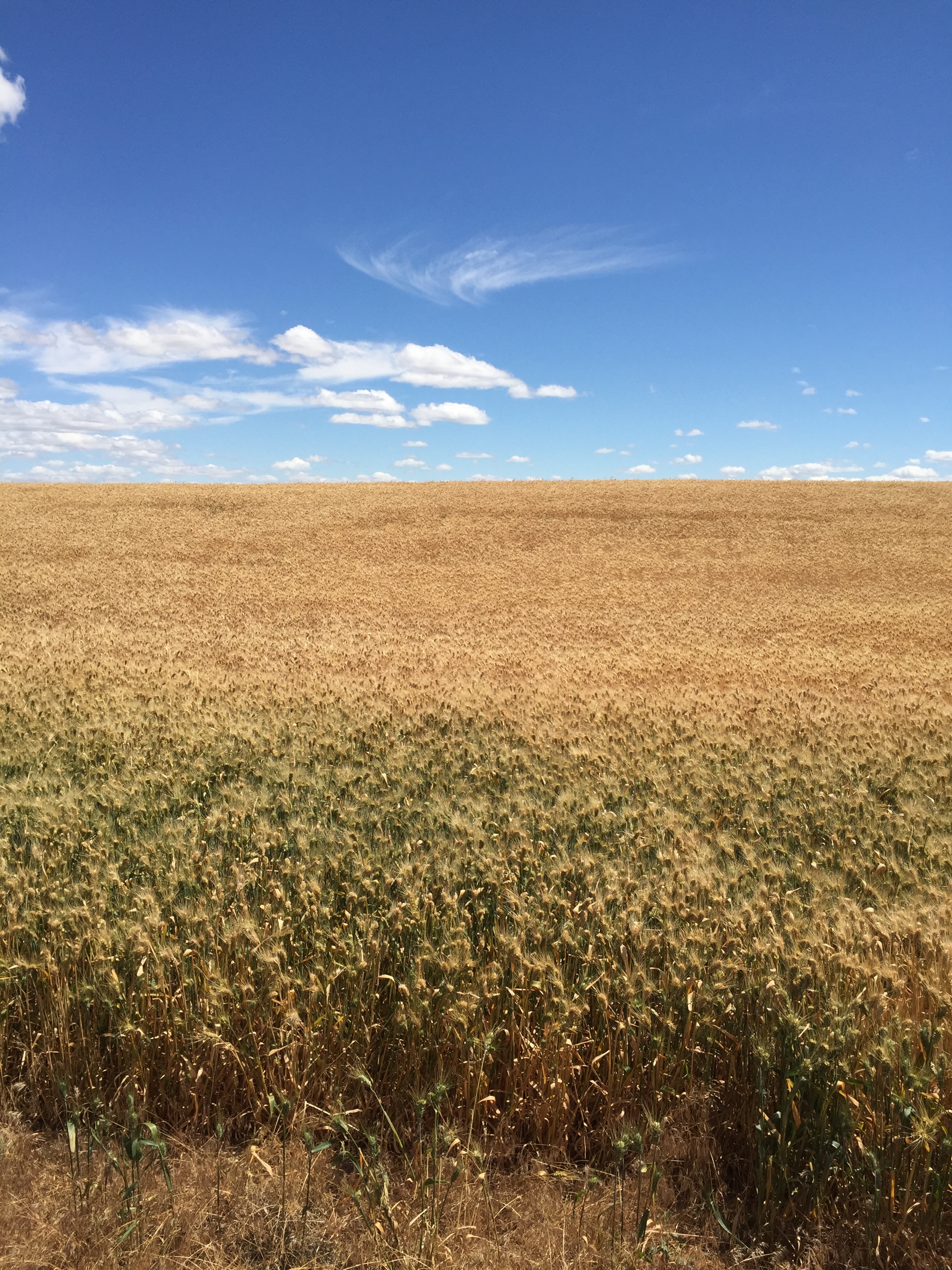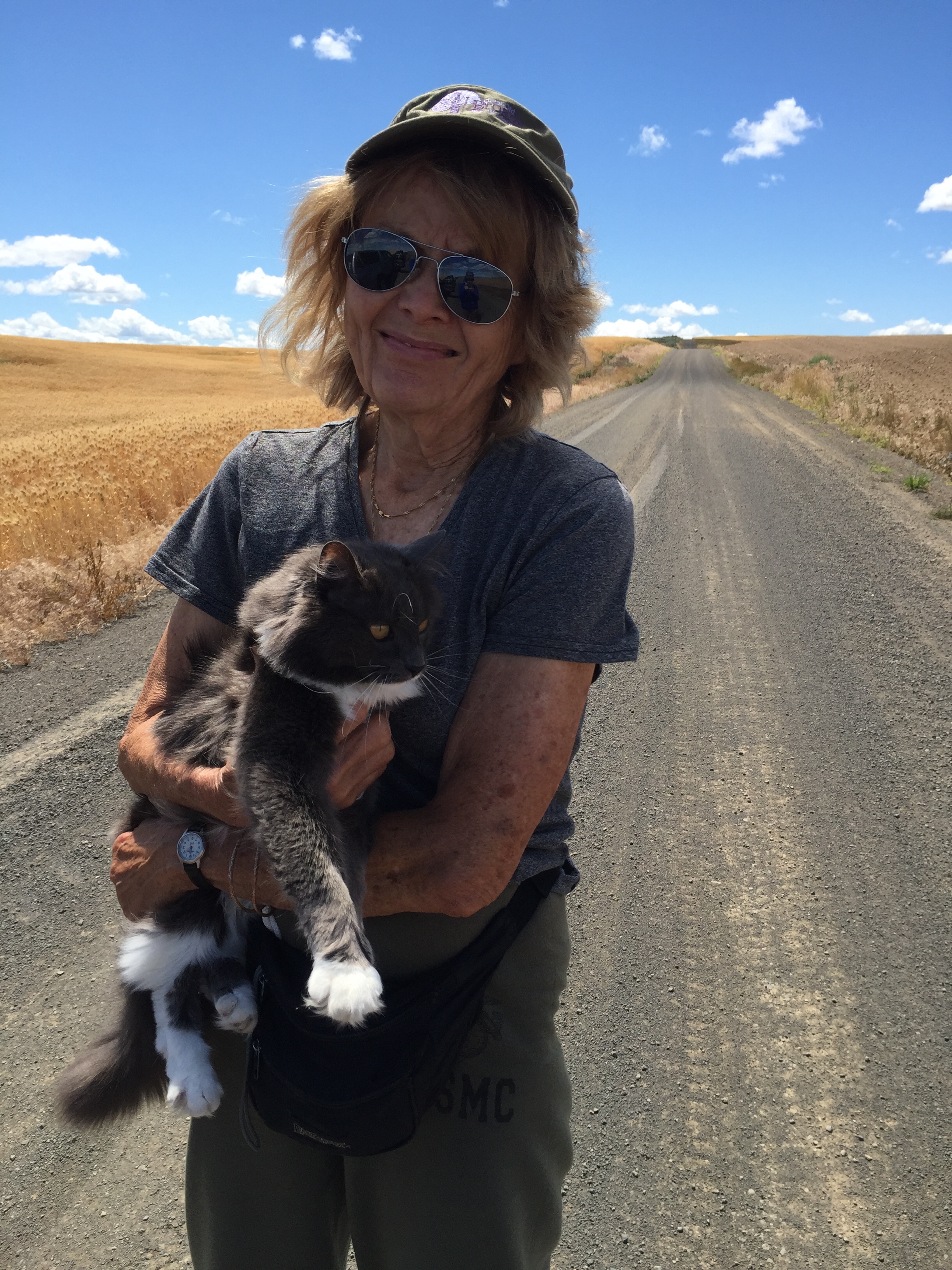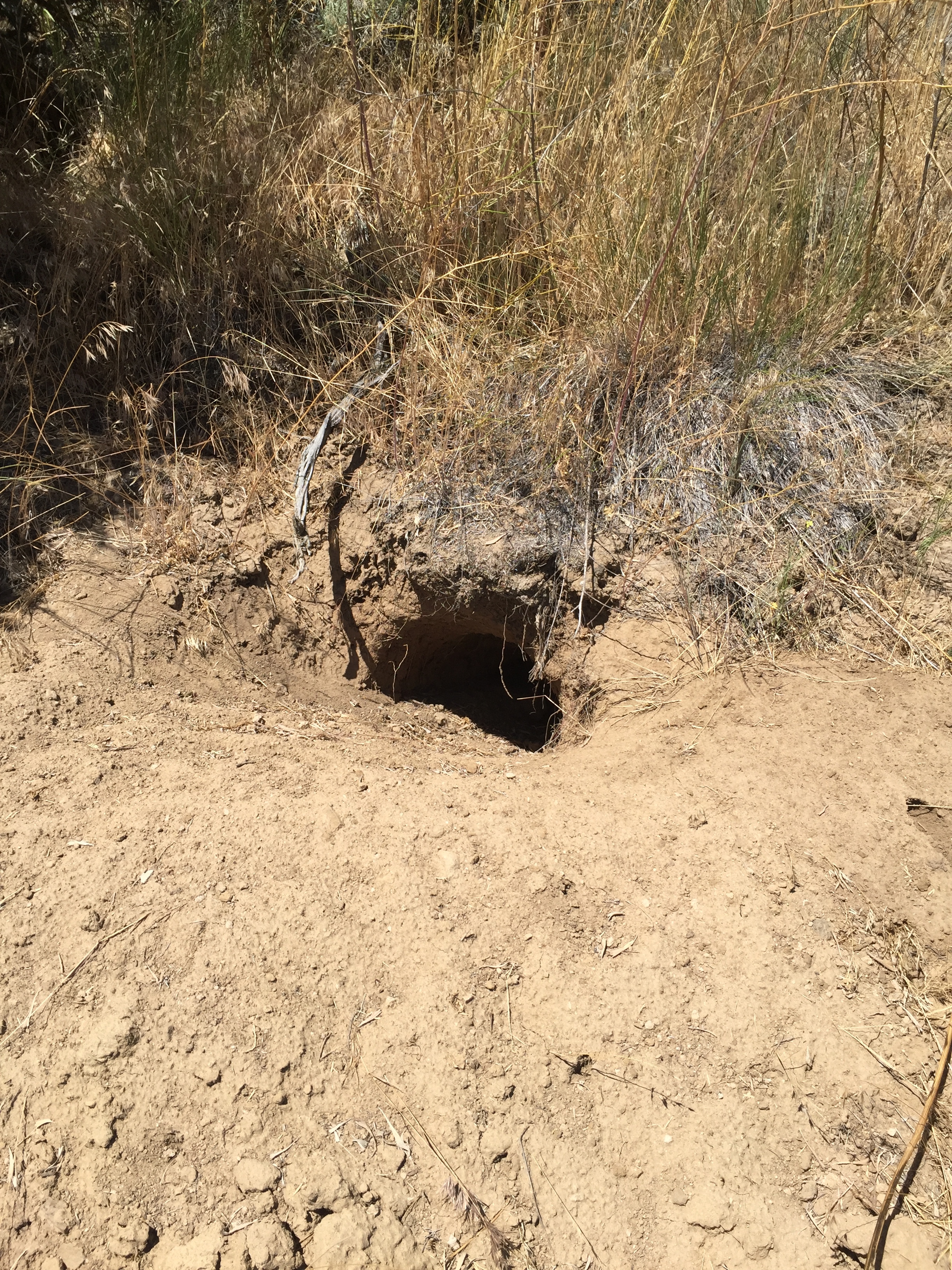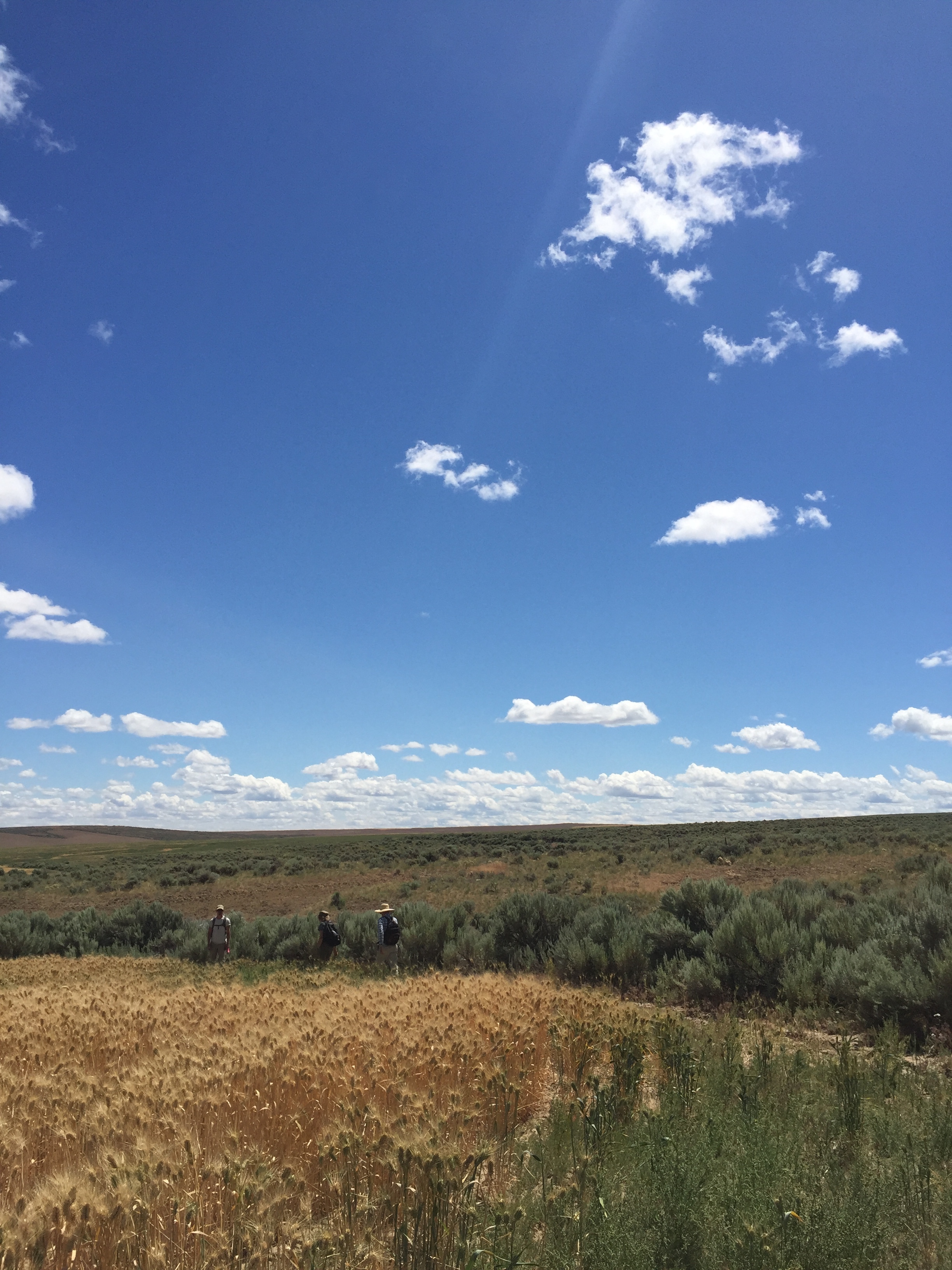Controlled burning, is a time-tested and effective tool that maximizes the benefits that low-intensity fire can provide within a variety of landscapes.
Hope Persists for Pygmy Rabbits Despite Blaze
Search Party for Pygmy Rabbits
Written & Photographed by Lauren Miheli, Volunteer Coordinator and Anna Snook, Volunteer Photographer
A hike in Washington’s sage brush country will reveal plant, animal, and bird populations distinct from those on the West Side of the state. On a typical day one would be lucky to see mule deer, badgers, meadow larks, mourning doves, small horned lizards and a great many other small mammals, birds and reptiles. Ideally if you saw a rattle snake it would be from a distance. Something you most likely wouldn’t encounter would be a Columbia Basin Pygmy Rabbit. Although native to this region, the pygmy rabbit is in danger of becoming extinct. The Washington Department of Fish and Wildlife (WDFW) has been working on a project to breed these rabbits in semi-captivity and reintroduce populations back into the wild, including on our Beezley Hills Preserve. Bringing a species back from the brink of extinction is challenging work. There is no manual on how it’s done. Wildlife biologists, using their knowledge of the rabbit’s behavior, funding from the federal government, and a lot of intuition, utilize a trial and error approach to breeding and reintroducing them to their native sage brush habitat in central Washington.
In order to determine if any rabbits released have successfully survived in the wild, Jon Gallie and Shea Gibbs of WDFW invited a crew of about 30 Nature Conservancy volunteers to traverse the land near the release sites and look for signs of pygmy rabbits: burrow holes and scat. Volunteers split into groups of 4, with each group led by a member of WDFW’s staff armed with a GPS unit and collection tools. Each volunteer covered about 7 miles each day, traversing back and forth, and up and down hills, throughout sage brush.
While searching for signs of Pygmy Rabbits I was struck at how familiar I became with signs of other desert species – badger and coyote dens, snake holes, mouse holes, cottontail rabbit scat, prints and scat from deer, coyotes, and the feral horses that were grazing in the area. Upon first site a badger den filled me with excitement. After the 5th or 6th one I became jaded. Throughout two days of hiking and covering sage brush land that could once have been home to dozens of Pygmy Rabbits, with all of the volunteers intently searching on those two days, only one burrow with fresh scat was located. So this is what it feels like to look for an endangered species - searching and searching, and not finding what you’re looking for. We collected valuable data that the biologists will use to improve their strategy, but we were disappointed that we did not find more signs of pygmy rabbits. Two days of hiking for nearly 6 hours straight and the absence of signs of Pygmy Rabbits was felt in our collective psyches. The lack of discoveries does not mean that Pygmy Rabbit recovery is hopeless. Aside from the literal silver lining (partial cloud cover on both days cooled us down and made the typically unbearable eastern Washington heat a non-issue) the one burrow that we did find gives the project managers something to be excited about. Previous surveys of the area revealed no burrows at all. Samples of the scat were collected that will be sent to the lab at the Oregon Zoo, where DNA from all captive-bred rabbits is kept on record, and we will learn when the rabbit that left the evidence was released, how long it has survived in the wild, and if we’re really lucky we will find out that it has DNA that has not yet been recorded - which would indicate that it was wild born.
The biologists at the Washington Department of Fish and Wildlife are doing amazing work, and are highly dedicated to their task of bringing this species back to healthy population numbers. I believe they are up to the challenge, and I hope that we can continue to improve our land management and conservation practices, so that other species are not pushed this far in the future.
LEARN HOW YOU CAN VOLUNTEER
Washington’s Wild Future
Guest blog by Washington Fish and Wildlife Director Jim Unsworth
Written by Jim Unsworth, Director, Washington Department of Fish and Wildlife
Photograph by Bridget Besaw
Nature is why many of us choose to live here in the Pacific Northwest.
Whether you are an angler, a hunter, a hiker, a photographer, a camper, or just take solace in our native species and habitat, we all deeply value our lands, waters, fish and wildlife.
As Director of the Washington Department of Fish and Wildlife, I have a humbling responsibility. The mission of our agency is to preserve, protect and perpetuate fish, wildlife and ecosystems while providing sustainable fish and wildlife recreational and commercial opportunities.
Today as we face challenges ranging from a warming planet and wildfires to screen addiction and couch potato syndrome, this mission is more critical than ever.
That’s why we need your help.
Since I joined WDFW in January 2015, I have been asking people, “If you could tell the director of Fish and Wildlife one thing, what would you say?” Well now is the time for people all across the state to do just that. I want to hear about what we are doing right, where we need to improve, and where we should concentrate our efforts and our funding over the next five to 10 to 20 years.
This is the focus of our new multi-year initiative, Washington’s Wild Future: A Partnership for Fish and Wildlife.
We are embarking on this effort to strengthen the department’s relationships with communities, increase support for conservation and outdoor recreation, and help ensure WDFW programs and services meet the public’s needs.
The comments and proposals we receive – in public meetings, online, and via social media – will help determine priorities for conserving and managing Washington’s fish and wildlife in the coming years.
PUBLIC MEETINGS
The meetings are scheduled for 6 to 8 p.m. at the following dates and locations:
Sept. 30 – Center Place, 2426 N. Discovery Place, Spokane Valley.
Oct. 6 – WDFW Mill Creek Office, 16018 Mill Creek Blvd, Mill Creek.
Oct. 8 – Saint Martin’s University, Norman Worthington Conference Center, 5300 Pacific Ave. SE, Lacey.
Oct. 14 – Water Resources Education Center, 4600 SE Columbia Way, Vancouver.
Oct. 20 – Port of Chelan County Confluence Technology Center, 285 Technology Center Way, Wenatchee.
We will summarize the comments and suggestions from the public, as well as input from outdoor organizations and the department’s advisory groups, later this year (2015). That information will be used to help identify potential changes in WDFW’s operations and services, and to develop future policy, budget and fee proposals. We face major management challenges over the next several years, and for us to be successful we need the public’s support and assistance.
That’s what this initiative is all about – listening and working with you to build a stronger and more effective Fish and Wildlife.








